Oil-Immersed Power Transformer Condition Monitoring Methodologies: A Review
Abstract
1. Introduction
2. Offline Condition Monitoring Methods
2.1. Degree of Polymerization of Insulation Paper
2.2. Furan Analysis
2.3. Interfacial Tension Analysis and Acidity
2.4. Oil Dielectric Breakdown Voltage
2.5. Insulation Resistance Test
2.6. Dissipation Factor Measurement
2.7. Dielectric Response Methods
- Recovery/return voltage measurements (RVM)
- Dielectric spectroscopy in time domain—polarization/depolarization currents (PDC)
- Dielectric spectroscopy in frequency domain/frequency domain spectroscopy (FDS)
2.7.1. Recovery/Return Voltage Measurement
2.7.2. Polarization/Depolarization Currents
2.7.3. Frequency Domain Spectroscopy
2.8. Sweep Frequency Response Analysis
2.9. Transformer Turns Ratio Test
3. Online Condition Monitoring Methods
3.1. Dissolved Gas Analysis
3.1.1. Gas Extraction
3.1.2. Gas Detection
3.1.3. DGA Data Interpretation
- (a)
- Key Gas Method
- (b)
- Rogers’ Ratio Method
- (c)
- Doernenburg Ratio Method
- (d)
- Duval Triangle Method
3.2. Partial Discharge
3.2.1. Ultrahigh-Frequency (UHF) Detection
3.2.2. Optical Detection
3.2.3. Transient Earth Voltage Detection
3.2.4. High-Frequency Current Transformer
3.3. Thermal Measurements
3.4. Vibration Analysis
4. Challenges and Opportunities
5. Conclusions
Author Contributions
Funding
Institutional Review Board Statement
Informed Consent Statement
Data Availability Statement
Acknowledgments
Conflicts of Interest
References
- Islam, M.M.; Lee, G.; Hettiwatte, S.N. A review of condition monitoring techniques and diagnostic tests for lifetime estimation of power transformers. Electr. Eng. 2017, 100, 581–605. [Google Scholar] [CrossRef]
- Aljohani, O.; Abu-Siada, A. Application of DIP to Detect Power Transformers Axial Displacement and Disk Space Variation Using FRA Polar Plot Signature. IEEE Trans. Ind. Inform. 2017, 13, 1794–1805. [Google Scholar] [CrossRef]
- Martin, D.; Marks, J.; Saha, T. Survey of Australian power transformer failures and retirements. IEEE Electr. Insul. Mag. 2017, 33, 16–22. [Google Scholar] [CrossRef]
- Samimi, M.H.; Ilkhechi, H.D. Survey of different sensors employed for the power transformer monitoring. IET Sci. Meas. Technol. 2020, 14, 1–8. [Google Scholar] [CrossRef]
- Ahmed, A.-S. Power Transformer Condition Monitoring and Diagnosis; The Institution of Engineering and Technology: Stevenage, UK, 2018. [Google Scholar]
- Soni, R.; Mehta, B. Review on asset management of power transformer by diagnosing incipient faults and faults identification using various testing methodologies. Eng. Fail. Anal. 2021, 128, 105634. [Google Scholar] [CrossRef]
- Saha, T.K. Review of modern diagnostic techniques for assessing insulation condition in aged transformers. IEEE Trans. Dielectr. Electr. Insul. 2003, 10, 903–917. [Google Scholar] [CrossRef]
- Li, S.; Ge, Z.; Abu-Siada, A.; Yang, L.; Li, S.; Wakimoto, K. A New Technique to Estimate the Degree of Polymerization of Insulation Paper Using Multiple Aging Parameters of Transformer Oil. IEEE Access 2019, 7, 157471–157479. [Google Scholar] [CrossRef]
- IEEE Std C57.91-2011 (Revision of IEEE Std C57.91-1995); IEEE Guide for Loading Mineral-Oil-Immersed Transformers and Step-Voltage Regulators. IEEE: Piscataway, NJ, USA, 2012; pp. 1–123. [CrossRef]
- Cheim, L.; Platts, D.; Prevost, T.; Xu, S. Furan analysis for liquid power transformers. IEEE Electr. Insul. Mag. 2012, 28, 8–21. [Google Scholar] [CrossRef]
- Abu-Siada, A. Correlation of furan concentration and spectral response of transformer oil-using expert systems. IET Sci. Meas. Technol. 2011, 5, 183–188. [Google Scholar] [CrossRef]
- Das, N.; Abu-Siada, A.; Islam, S. New approach to estimate furan contents in transformer oil using spectroscopic analysis. In Proceedings of the 2012 22nd Australasian Universities Power Engineering Conference (AUPEC), Bali, Indonesia, 26–29 September 2012; pp. 1–4. [Google Scholar]
- IEEE Std C57.152-2013; IEEE Guide for Diagnostic Field Testing of Fluid-Filled Power Transformers, Regulators, and Reactors. IEEE: Piscataway, NJ, USA, 2013; pp. 1–121. [CrossRef]
- Feng, D.; Wang, Z.; Jarman, P. Transmission power transformer assessment using furan measurement with the aid of thermal model. In Proceedings of the 2012 IEEE International Conference on Condition Monitoring and Diagnosis, Bali, Indonesia, 23–27 September 2012; pp. 521–524. [Google Scholar] [CrossRef]
- Abu-Siada, A.; Lai, S.P.; Islam, S.M. A Novel Fuzzy-Logic Approach for Furan Estimation in Transformer Oil. IEEE Trans. Power Deliv. 2012, 27, 469–474. [Google Scholar] [CrossRef]
- Karthik, R.; Raja, T.S.R.; Shunmugam, S.S. Performance evaluation of transformer oil using uv-visible spectrophotometer. Acta Sci. Technol. 2014, 36, 245–250. [Google Scholar] [CrossRef][Green Version]
- Polanský, R.; Hahn, P.; Kadlec, P.; Moravcová, D.; Prosr, P. Quantifying the Effect of Catalysts on the Lifetime of Transformer Oil. Appl. Sci. 2020, 10, 1309. [Google Scholar] [CrossRef]
- Bakar, N.A.; Abu-Siada, A. A novel method of measuring transformer oil interfacial tension using UV-Vis spectroscopy. IEEE Electr. Insul. Mag. 2016, 32, 7–13. [Google Scholar] [CrossRef]
- Baka, N.A.; Abu-Siada, A.; Islam, S.; El-Naggar, M.F. A new technique to measure interfacial tension of transformer oil using UV-Vis spectroscopy. IEEE Trans. Dielectr. Electr. Insul. 2015, 22, 1275–1282. [Google Scholar] [CrossRef]
- Cui, H.; Yang, L.; Li, S.; Abu-Siada, A.; Yan, W.; Qu, G.; Li, S.; Zhu, Y.; Yue, W. Effect of Temperature and Pre-stressed Voltage on Breakdown of Oil-Impregnated Paper. In Proceedings of the 2018 Condition Monitoring and Diagnosis (CMD), Perth, WA, Australia, 23–26 September 2018; pp. 1–5. [Google Scholar] [CrossRef]
- Suleiman, A.A.; Muhamad, N.A.; Bashir, N.; Murad, N.S.; Arief, Y.Z.; Phung, B.T. Effect of moisture on breakdown voltage and structure of palm based insulation oils. IEEE Trans. Dielectri. Electr. Insul. 2014, 21, 2119–2126. [Google Scholar] [CrossRef]
- IEEE Std C57.106-2015 (Revision of IEEE Std C57.106-2006); IEEE Guide for Acceptance and Maintenance of Insulating Mineral Oil in Electrical Equipment. IEEE: Piscataway, NJ, USA, 2016; pp. 1–38. [CrossRef]
- Li, S.; Yang, L.; Li, S.; Zhu, Y.; Cui, H.; Yan, W.; Ge, Z.; Abu-Siada, A. Effect of AC-voltage harmonics on oil impregnated paper in transformer bushings. IEEE Trans. Dielectr. Electr. Insul. 2020, 27, 26–32. [Google Scholar] [CrossRef]
- Juris, J.S.; Duran, I.C.; Marulanda, A.R. Correlation between Insulation Resistance and Dissolved Gas Analysis Tests in Power Transformers. In Proceedings of the 2020 IEEE PES Transmission & Distribution Conference and Exhibition—Latin America (T&D LA), Montevideo, Uruguay, 28 September–2 October 2020; pp. 1–6. [Google Scholar] [CrossRef]
- Karimi, H.T.F. Measurement variations of insulation resistance/polarization index during utilizing time in HV electrical machines—A survey. Measurement 2015, 59, 21–29. [Google Scholar] [CrossRef]
- IEEE Std 43-2013 (Revision of IEEE Std 43-2000); IEEE Recommended Practice for Testing Insulation Resistance of Electric Machinery. IEEE: Piscataway, NJ, USA, 2014; pp. 1–37. [CrossRef]
- Marques, A.P.; Azevedo, C.H.B.; dos Santos, J.A.L.; Sousa, F.R.d.C.; Moura, N.K.; Ribeiro, C.J.; Dias, Y.A.; Rodrigues, A.; Rocha, A.S.; Brito, L.d.C. Insulation resistance of power transformers—method for optimized analysis. In Proceedings of the 2017 IEEE 19th International Conference on Dielectric Liquids (ICDL), Manchester, UK, 25–29 June 2017; pp. 1–4. [Google Scholar] [CrossRef]
- Malpure, B.D.; Baburao, K. Failure Analysis & Diagnostics of Power Transformer Using Dielectric dissipation factor. In Proceedings of the 2008 International Conference on Condition Monitoring and Diagnosis, Beijing, China, 21–24 April 2008; pp. 497–501. [Google Scholar] [CrossRef]
- Setayeshmehr, A.; Akbari, A.; Borsi, H.; Gockenbach, E. On-line monitoring and diagnoses of power transformer bushings. IEEE Trans. Dielectr. Electr. Insul. 2006, 13, 608–615. [Google Scholar] [CrossRef]
- Faria, G.; Pereira, M.; Lopes, G.; Villibor, J.; Tavares, P.; Faria, I. Evaluation of Capacitance and Dielectric Dissipation Factor of Distribution Transformers—Experimental Results. In Proceedings of the 2018 IEEE Electrical Insulation Conference (EIC), San Antonio, TX, USA, 17–20 June 2018; pp. 336–339. [Google Scholar] [CrossRef]
- Abu-Siada, A.; Islam, S. A new approach to identify power transformer criticality and asset management decision based on dissolved gas-in-oil analysis. IEEE Trans. Dielectr. Electr. Insul. 2012, 19, 1007–1012. [Google Scholar] [CrossRef]
- Wang, D.; Zhou, L.; Yang, Z.-X.; Cui, Y.; Wang, L.; Jiang, J.; Guo, L. A New Testing Method for the Dielectric Response of Oil-Immersed Transformer. IEEE Trans. Ind. Electr. 2020, 67, 10833–10843. [Google Scholar] [CrossRef]
- Boss, P.; Csepes, G.; Der Houhanessian, V.; Filippini, J.; Guuinic, P.; Gafvert, U.; Zaeng, W. Dielectric response methods for diagnostics of power transformers. IEEE Electr. Insul. Mag. 2003, 19, 12–18. [Google Scholar] [CrossRef]
- Zhang, T.; Tan, X.; Zhang, B.; Xu, X. Study on Moisture and Aging of Oil-Paper Insulation Using Relative Initial Slope of Recovery Voltage. IEEE Trans. Appl. Supercond. 2016, 26, 1–4. [Google Scholar] [CrossRef]
- Saha, T.K.; Tong, Y.Z. Experience with return voltage measurements for assessing insulation conditions in service-aged transformers. IEEE Trans. Power Deliv. 2003, 18, 128–135. [Google Scholar] [CrossRef]
- Fofana, I.; Bouaicha, A.; Farzaneh, M. Aging Characterization of Transformer Oil-Pressboard Insulation using Modern Diagnostic Techniques. Eur. Trans. Electr. Power 2011, 11, 1110–1127. [Google Scholar] [CrossRef]
- Talib, M.A.; Ghazali, N.A.M.; Christie, M.; Zakaria, W.; Hashim, I.; Uthman, S.; Jamali, M.N. Diagnosis of transformer insulation condition using recovery voltage measurements. In Proceedings of the National Power Engineering Conference, PECon 2003, Bangi, Malaysia, 15–16 December 2003; pp. 329–332. [Google Scholar] [CrossRef]
- Linhjell, D.; Lundgaard, L.; Gafvert, U. Dielectric response of mineral oil impregnated cellulose and the impact of aging. IEEE Trans. Dielectr. Electr. Insul. 2007, 14, 156–169. [Google Scholar] [CrossRef]
- Saha, T.K.; Darveniza, M.; Hill, D.J.T.; Le, T.T. Electrical and chemical diagnostics of transformers insulation. A. Aged transformer samples. IEEE Trans. Power Deliv. 1997, 12, 1547–1554. [Google Scholar] [CrossRef]
- Saha, T.K.; Purkait, P. Investigation of polarization and depolarization current measurements for the assessment of oil-paper insulation of aged transformers. IEEE Trans. Dielectr. Electr. Insul. 2004, 11, 144–154. [Google Scholar] [CrossRef]
- Liu, J.; Zhang, D.; Wei, X.; Karimi, H.R. Transformation Algorithm of Dielectric Response in Time-Frequency Domain. Math. Probl. Eng. 2014, 2014, 547105. [Google Scholar] [CrossRef]
- Zhang, T.; Li, X.; Lv, H.; Tan, X. Parameter Identification and Calculation of Return Voltage Curve Based on FDS Data. IEEE Trans. Appl. Supercond. 2014, 24, 1–5. [Google Scholar] [CrossRef]
- Kumara, S.; Bandara, K.; Wickramasuriya, P.; Yousuf, F.; Ekanayake, C.; Fernando, M.; Wang, Z.; Gubanski, S.M. Frequency Domain Measurements for Diagnosis of Power Transformers: Experiences from Australia, Malaysia, Sri Lanka and UK. CIGRE Sci. Eng. (CSE) 2021, 2021, 82–107. [Google Scholar]
- Abu-Siada, A.; Aljohani, O. Detecting incipient radial deformations of power transformer windings using polar plot and digital image processing. IET Sci. Meas. Technol. 2018, 12, 492–499. [Google Scholar] [CrossRef]
- Bigdeli, M.; Abu-Siada, A. Clustering of transformer condition using frequency response analysis based on k-means and GOA. Electr. Power Syst. Res. 2022, 202, 107619. [Google Scholar] [CrossRef]
- Al-Ameri, S.M.A.N.; Kamarudin, M.S.; Yousof, M.F.M.; Salem, A.A.; Banakhr, F.A.; Mosaad, M.I.; Abu-Siada, A. Understanding the Influence of Power Transformer Faults on the Frequency Response Signature Using Simulation Analysis and Statistical Indicators. IEEE Access 2021, 9, 70935–70947. [Google Scholar] [CrossRef]
- Abu-Siada, A.; Mosaad, M.I.; Kim, D.; El-Naggar, M.F. Estimating Power Transformer High Frequency Model Parameters Using Frequency Response Analysis. IEEE Trans. Power Deliv. 2020, 35, 1267–1277. [Google Scholar] [CrossRef]
- Aljohani, O.; Abu-Siada, A. Application of digital image processing to detect transformer bushing faults and oil degradation using FRA polar plot signature. IEEE Trans. Dielectr. Electr. Insul. 2017, 24, 428–436. [Google Scholar] [CrossRef]
- Zhao, X.; Yao, C.; Zhao, Z.; Abu-Siada, A. Performance evaluation of online transformer internal fault detection based on transient overvoltage signals. IEEE Trans. Dielectr. Electr. Insul. 2017, 24, 3906–3915. [Google Scholar] [CrossRef]
- Behjat, V.; Vahedi, A.; Setayeshmehr, A.; Borsi, H.; Gockenbach, E. Diagnosing Shorted Turns on the Windings of Power Transformers Based Upon Online FRA Using Capacitive and Inductive Couplings. IEEE Trans. Power Deliv. 2011, 26, 2123–2133. [Google Scholar] [CrossRef]
- Zhao, X.; Yao, C.; Zhou, Z.; Li, C.; Wang, X.; Zhu, T.; Abu-Siada, A. Experimental Evaluation of Transformer Internal Fault Detection Based on V–I Characteristics. IEEE Trans. Ind. Electr. 2020, 67, 4108–4119. [Google Scholar] [CrossRef]
- Iwanusiw, O.W.; Eng, P. The Art and Science of Transformer Ratio Measurement. In Proceedings of the 2018 IEEE Electrical Insulation Conference (EIC), San Antonio, TX, USA, 17–20 June 2018; pp. 390–394. [Google Scholar] [CrossRef]
- Razzaq, A.S.A.; Yousof, M.F.M.; Al-Ameri, S.M.; Talib, M.A.; Mshkil, A.J. Interpretation of Inter-Turn Fault in Transformer Winding Using Turns Ratio Test and Frequency Response Analysis. Int. J. Electr. Electron. Eng. Telecommun. 2022, 11, 218–225. [Google Scholar]
- Osmanbasic, E. Importance of using high test voltage for transformer turns ratio test. Transform. Mag. 2021, 8, 98–105. [Google Scholar]
- Abu-Siada, A.; Arshad, M.; Islam, S. Fuzzy logic approach to identify transformer criticality using dissolved gas analysis. In Proceedings of the IEEE PES General Meeting, Minneapolis, MN, USA, 25–29 July 2010; pp. 1–5. [Google Scholar] [CrossRef]
- Norazhar, A.B.; Abu-Siada, A.; Islam, S. A review on chemical diagnosis techniques for transformer paper insulation degradation. In Proceedings of the 2013 Australasian Universities Power Engineering Conference (AUPEC), Hobart, TAS, Australia, 29 September–3 October 2013; pp. 1–6. [Google Scholar] [CrossRef]
- Abu-Siada, A. Improved Consistent Interpretation Approach of Fault Type within Power Transformers Using Dissolved Gas Analysis and Gene Expression Programming. Energies 2019, 12, 730. Available online: https://www.mdpi.com/1996-1073/12/4/730 (accessed on 22 February 2019). [CrossRef]
- Abu-Siada, A.; Hmood, S.; Islam, S. A new fuzzy logic approach for consistent interpretation of dissolved gas-in-oil analysis. IEEE Trans. Dielectr. Electr. Insul. 2013, 20, 2343–2349. [Google Scholar] [CrossRef]
- Bakar, N.A.; Abu-Siada, A.; Islam, S. A review of dissolved gas analysis measurement and interpretation techniques. IEEE Electr. Insul. Mag. 2014, 30, 39–49. [Google Scholar] [CrossRef]
- Chow, J.; Lee, R.; Wong, E.; Leung, K.; Lai, G. Novel engineering techniques to overcoming traditional challenges in online condition monitoring systems for power transformer. HKIE Trans. 2018, 25, 248–254. [Google Scholar] [CrossRef]
- Ma, L.-C.; Chen, C.; Lin, J.Y.S. Teflon AF2400 Hollow Fiber Membrane Contactor for Dissolved Gas-in-Oil Extraction: Mass Transfer Characteristics. Ind. Eng. Chem. Res. 2020, 59, 16795–16804. [Google Scholar] [CrossRef]
- Ma, L.-C.; Chen, C.; Chen, C.-H.; Tung, K.-L.; Lin, J.Y.S. Gas Transport Properties of Teflon AF2400/Ceramic Composite Hollow Fiber Membranes in Dissolved-Gas-in-Oil Extraction. Ind. Eng. Chem. Res. 2020, 59, 5392–5401. [Google Scholar] [CrossRef]
- Fan, J.; Wang, F.; Sun, Q.; Bin, F.; Ding, J.; Ye, H. SOFC detector for portable gas chromatography: High-sensitivity detection of dissolved gases in transformer oil. IEEE Trans. Dielectr. Electr. Insul. 2017, 24, 2854–2863. [Google Scholar] [CrossRef]
- Fan, J.; Wang, F.; Sun, Q.; Ye, H.; Jiang, Q. Application of Polycrystalline SnO2 Sensor Chromatographic System to Detect Dissolved Gases in Transformer Oil. Sens. Actuators B Chem. 2018, 267, 636–646. [Google Scholar] [CrossRef]
- Mao, Z.; Wen, J. Detection of dissolved gas in oil–insulated electrical apparatus by photoacoustic spectroscopy. IEEE Electr. Insul. Mag. 2015, 31, 7–14. [Google Scholar] [CrossRef]
- Cui, H.; Yang, L.; Zhu, Y.; Li, S.; Abu-Siada, A.; Islam, S. Dissolved Gas Analysis for Power Transformers within Distributed Renewable Generation-Based Systems. IEEE Trans. Dielectr. Electr. Insul. 2021, 28, 1349–1356. [Google Scholar] [CrossRef]
- Palzer, S. Photoacoustic-based gas sensing: A review. Sensors 2020, 20, 2745. [Google Scholar] [CrossRef] [PubMed]
- Yun, Y.; Chen, W.; Wang, Y.; Pan, C. Photoacoustic detection of dissolved gases in transformer oil. Eur. Trans. Electr. Power 2008, 18, 562–576. [Google Scholar] [CrossRef]
- Bakar, N.A.; Abu-Siada, A. A new method to detect dissolved gases in transformer oil using NIR-IR spectroscopy. IEEE Trans. Dielectr. Electr. Insul. 2017, 24, 409–419. [Google Scholar] [CrossRef]
- Yang, T.; Chen, W. Detection of Dissolved Gas in Transformer Oil Based on All-Optical Photoacoustic Spectroscopy. In Proceedings of the 2020 IEEE International Conference on High Voltage Engineering and Application (ICHVE), Beijing, China, 6–10 September 2020; pp. 1–4. [Google Scholar] [CrossRef]
- Kondalkar, V.V.; Park, J.; Lee, K. MEMS hydrogen gas sensor for in-situ monitoring of hydrogen gas in transformer oil. Sens. Actuators B Chem. 2021, 326, 128989. [Google Scholar] [CrossRef]
- Lewis, F.A. The palladium/hydrogen system. Berichte Bunsenges. Phys. Chem. 1967, 71, 1160–1161. [Google Scholar] [CrossRef]
- Christofides, C.; Mandelis, A. Solid-state sensors for trace hydrogen gas detection. J. Appl. Phys. 1990, 68, R1–R30. [Google Scholar] [CrossRef]
- Kumar, A. Palladium-based trench gate MOSFET for highly sensitive hydrogen gas sensor. Mater. Sci. Semicond. Process. 2020, 120, 105274. [Google Scholar] [CrossRef]
- Zhang, L.; Zhao, H.; Li, Y.; Han, Y.; Wang, S.; Shang, Y. Study on Multi-parameter On-line Monitoring System for Transformer Bushing. In Proceedings of the 2020 Asia Energy and Electrical Engineering Symposium (AEEES), Chengdu, China, 29–31 May 2020; pp. 54–58. [Google Scholar] [CrossRef]
- Lee, E.; Lee, J.M.; Koo, J.H.; Lee, W.; Lee, T. Hysteresis behavior of electrical resistance in Pd thin films during the process of absorption and desorption of hydrogen gas. Int. J. Hydrogen Energy 2010, 35, 6984–6991. [Google Scholar] [CrossRef]
- IEEE Std C57.104-2019 (Revision of IEEE Std C57.104-2008); IEEE Guide for the Interpretation of Gases Generated in Mineral Oil-Immersed Transformers. IEEE: Piscataway, NJ, USA, 2019; pp. 1–98. [CrossRef]
- IEEE Std C57.155-2014; IEEE Guide for Interpretation of Gases Generated in Natural Ester and Synthetic Ester-Immersed Transformers. IEEE: Piscataway, NJ, USA, 2014; pp. 1–52. [CrossRef]
- Faiz, J.; Soleimani, M. Dissolved gas analysis evaluation in electric power transformers using conventional methods a review. IEEE Trans. Dielectr. Electr. Insul. 2017, 24, 1239–1248. [Google Scholar] [CrossRef]
- Cui, H.; Yang, L.; Li, S.; Qu, G.; Wang, H.; Abu-Siada, A.; Islam, S. Impact of Load Ramping on Power Transformer Dissolved Gas Analysis. IEEE Access 2019, 7, 170343–170351. [Google Scholar] [CrossRef]
- Wannapring, E.; Suwanasri, C.; Suwanasri, T. Dissolved Gas Analysis methods for distribution transformers. In Proceedings of the 2016 13th International Conference on Electrical Engineering/Electronics, Computer, Telecommunications and Information Technology (ECTI-CON), Chiang Mai, Thailand, 28 June–1 July 2016; pp. 1–6. [Google Scholar] [CrossRef]
- Sarkar, B.; Koley, C.; Roy, N.K.; Kumbhakar, P. Condition monitoring of high voltage transformers using Fiber Bragg Grating Sensor. Meas. J. Int. Meas. Confed. 2015, 74, 255–267. [Google Scholar] [CrossRef]
- Jiang, G.M.J. Partial Discharge Detection with Optical Methods. In Optical Sensing in Power Transformers; Wiley: London, UK, 2021; Chapter 5; pp. 137–188. [Google Scholar]
- Kim, D.; Abu-Siada, A. Partial Discharge Analysis on-site in Various High Voltage Apparatus. In Proceedings of the 2018 Condition Monitoring and Diagnosis (CMD), Perth, WA, Australia, 23–26 September 2018; pp. 1–6. [Google Scholar] [CrossRef]
- IEEE Std C57.127-2018 (Revision of IEEE Std C57.127-2007); IEEE Guide for the Detection, Location and Interpretation of Sources of Acoustic Emissions from Electrical Discharges in Power Transformers and Power Reactors. IEEE: Piscataway, NJ, USA, 2019; pp. 1–72. [CrossRef]
- Neuhold, S.M.; Brugger, T.; Behrmann, G.; Schlemper, H.D.; Riechert, U.; Muller, P.; Lehner, M.; Schneiter, E.; Sigrist, P. Return of Experience: The CIGRE UHF PD Sensitivity Verification and On-Site Detection of Critical Defects; CIGRE: Paris, France, 2018; pp. 1–13. [Google Scholar]
- Roslizan, N.D.; Rohani, M.N.K.H.; Wooi, C.L.; Isa, M.; Ismail, B.; Rosmi, A.S.; Mustafa, W.A. A Review: Partial Discharge Detection using UHF sensor on High Voltage Equipment. J. Phys. Conf. Ser. 2020, 1432, 12003. [Google Scholar] [CrossRef]
- Chai, H.; Phung, B.T.; Mitchell, S. Application of UHF Sensors in Power System Equipment for Partial Discharge Detection: A Review. Sensors 2019, 19, 1029. [Google Scholar] [CrossRef] [PubMed]
- Sinaga, H.H.; Phung, B.T.; Blackburn, T.R. Partial discharge localization in transformers using UHF detection method. IEEE Trans. Dielectr. Electr. Insul. 2012, 19, 1891–1900. [Google Scholar] [CrossRef]
- Chakravarthi, M.K.; Giridhar, A.V.; Sarma, D.V.S.S.S. Localization of Incipient Discharge in Power Transformer Using UHF Sensor. In Proceedings of the 2019 International Conference on High Voltage Engineering and Technology (ICHVET), Hyderabad, India, 7–8 February 2019; pp. 1–3. [Google Scholar] [CrossRef]
- Yuan, W.; Chuangli, G.; Zhipeng, W.; Pengcheng, D. UHF PD Online Monitoring of Huge-Size Transformers and Data Analysis. In Proceedings of the 2011 International Conference on Computer Distributed Control and Intelligent Environmental Monitoring, Changsha, China, 19–20 February 2011; pp. 2375–2378. [Google Scholar] [CrossRef]
- Hoek, S.M.; Krüger, M.; Körber, S.; Kraetge, A. Application of the UHF technology to detect and locate partial discharges in liquid immersed transformer. Elektrotech. Inf. 2014, 131, 386–392. [Google Scholar] [CrossRef]
- Chai, H.; Phung, B.T.; Zhang, D. Development of UHF Sensors for Partial Discharge Detection in Power Transformer. In Proceedings of the 2018 Condition Monitoring and Diagnosis (CMD), Perth, WA, Australia, 23–26 September 2018; pp. 1–5. [Google Scholar] [CrossRef]
- Zhou, H.Y.; Ma, G.M.; Zhang, M.; Zhang, H.C.; Li, C.R. A High Sensitivity Optical Fiber Interferometer Sensor for Acoustic Emission Detection of Partial Discharge in Power Transformer. IEEE Sens. J. 2021, 21, 24–32. [Google Scholar] [CrossRef]
- Gao, C.; Yu, L.; Xu, Y.; Wang, W.; Wang, S.; Wang, P. Partial Discharge Localization Inside Transformer Windings via Fiber-Optic Acoustic Sensor Array. IEEE Trans. Power Deliv. 2019, 34, 1251–1260. [Google Scholar] [CrossRef]
- Yaacob, M.M.; Alsaedi, M.A.; Rashed, J.R.; Dakhil, A.M.; Atyah, S.F. Review on partial discharge detection techniques related to high voltage power equipment using different sensors. Photonic Sens. 2014, 4, 325–337. [Google Scholar] [CrossRef]
- Gao, C.; Wang, W.; Song, S.; Wang, S.; Yu, L.; Wang, Y. Localization of partial discharge in transformer oil using Fabry-Pérot optical fiber sensor array. IEEE Trans. Dielectr. Electr. Insul. 2018, 25, 2279–2286. [Google Scholar] [CrossRef]
- Qian, S.; Chen, H.; Xu, Y.; Su, L. High sensitivity detection of partial discharge acoustic emission within power transformer by sagnac fiber optic sensor. IEEE Trans. Dielectr. Electr. Insul. 2018, 25, 2313–2320. [Google Scholar] [CrossRef]
- Zachariades, C.; Shuttleworth, R.; Giussani, R.; MacKinlay, R. Optimization of a High-Frequency Current Transformer Sensor for Partial Discharge Detection Using Finite-Element Analysis. IEEE Sens. J. 2016, 16, 7526–7533. [Google Scholar] [CrossRef]
- Ma, G.-M.; Zhou, H.-Y.; Shi, C.; Li, Y.-B.; Zhang, Q.; Li, C.-R.; Zheng, Q. Distributed Partial Discharge Detection in a Power Transformer Based on Phase-Shifted FBG. IEEE Sens. J. 2018, 18, 2788–2795. [Google Scholar] [CrossRef]
- Búa-Núñez, I.; Posada-Román, J.E.; Rubio-Serrano, J.; Garcia-Souto, J.A. Instrumentation System for Location of Partial Discharges Using Acoustic Detection With Piezoelectric Transducers and Optical Fiber Sensors. IEEE Trans. Instrum. Meas. 2014, 63, 1002–1013. [Google Scholar] [CrossRef]
- Búa-Núñez, I.; Posada-Román, J.E.; García-Souto, J.A. Multichannel detection of acoustic emissions and localization of the source with external and internal sensors for partial discharge monitoring of power transformers. Energies 2021, 14, 7873. [Google Scholar] [CrossRef]
- Yoshizumi, H.; Nakano, Y.; Kozako, M.; Hikita, M.; Fujii, Y.; Nakamura, Y.; Cho, H. Consideration of Generation Mechanism of Low Frequency Component of Partial Discharge Signal Detected by Transient Earth Voltage. In Proceedings of the 2018 Condition Monitoring and Diagnosis (CMD), Perth, WA, Australia, 23–26 September 2018; pp. 1–4. [Google Scholar] [CrossRef]
- Reid, A.J.; Judd, M.D.; Duncan, G. Simultaneous measurement of partial discharge using TEV, IEC60270 and UHF techniques. In Proceedings of the 2012 IEEE International Symposium on Electrical Insulation, San Juan, PR, USA, 10–13 June 2012; pp. 439–442. [Google Scholar] [CrossRef]
- Wang, L.; Wang, H.; Wang, L.; Lü, H.; Ning, W.; Jia, S.; Wu, J. Experimental investigation of transient earth voltage and acoustic emission measurements of partial discharge signals in medium-voltage switchgears. In Proceedings of the 2013 2nd International Conference on Electric Power Equipment—Switching Technology (ICEPE-ST), Matsue, Japan, 20–23 October 2013; pp. 1–4. [Google Scholar] [CrossRef]
- Itose, A.; Kozako, M.; Hikita, M. Partial discharge detection and induced surface current analysis using transient earth voltage method for high voltage equipment. In Proceedings of the 2016 International Conference on Condition Monitoring and Diagnosis (CMD), Xi’an, China, 25–28 September 2016; pp. 456–460. [Google Scholar] [CrossRef]
- Seo, J.; Ma, H.; Saha, T. A novel signal extraction technique for online partial discharge (PD) measurement of transformers. Int. Trans. Electr. Energy Syst. 2016, 26, 1032–1048. [Google Scholar] [CrossRef]
- Hu, X.; Siew, W.H.; Judd, M.D.; Peng, X. Transfer function characterization for HFCTs used in partial discharge detection. IEEE Trans. Dielectr. Electr. Insul. 2017, 24, 1088–1096. [Google Scholar] [CrossRef]
- Aslam, M.; Haq, I.U.; Rehan, M.S.; Basit, A.; Arif, M.; Khan, M.I.; Sadiq, M.; Arbab, M.N. Dynamic Thermal Model for Power Transformers. IEEE Access 2021, 9, 71461–71469. [Google Scholar] [CrossRef]
- Wang, M.; Vandermaar, A.J.; Srivastava, K.D. Review of condition assessment of power transformers in service. IEEE Electr. Insul. Mag. 2002, 18, 12–25. [Google Scholar] [CrossRef]
- Mikhak-Beyranvand, M.; Faiz, J.; Rezaeealam, B. Thermal Analysis of Power Transformer Using an Improved Dynamic Thermal Equivalent Circuit Model. Electr. Power Compon. Syst. 2019, 47, 1598–1609. [Google Scholar] [CrossRef]
- Kunicki, M.; Borucki, S.; Cichoń, A.; Frymus, J. Modeling of the Winding Hot-Spot Temperature in Power Transformers: Case Study of the Low-Loaded Fleet. Energies 2019, 12, 3561. [Google Scholar] [CrossRef]
- Mariprasath, T.; Kirubakaran, V. A real time study on condition monitoring of distribution transformer using thermal imager. Infrared Phys. Technol. 2018, 90, 78–86. [Google Scholar] [CrossRef]
- Hu, Y.; Zheng, J.; Huang, H. Experimental Research on Power Transformer Vibration Distribution under Different Winding Defect Conditions. Electronics 2019, 8, 842. [Google Scholar] [CrossRef]
- Secic, A.; Krpan, M.; Kuzle, I. Vibro-Acoustic Methods in the Condition Assessment of Power Transformers: A Survey. IEEE Access 2019, 7, 83915–83931. [Google Scholar] [CrossRef]
- Ji, S.; Shan, P.; Li, Y.; Xu, D.; Cao, J. The vibration measuring system for monitoring core and winding condition of power transformer. In Proceedings of the 2001 International Symposium on Electrical Insulating Materials (ISEIM 2001). 2001 Asian Conference on Electrical Insulating Diagnosis (ACEID 2001). 33rd Symposium on Electrical and Ele, Himeji, Japan, 19–22 November 2001; pp. 849–852. [Google Scholar] [CrossRef]
- Garcia, B.; Burgos, J.C.; Alonso, A.M. Transformer tank vibration modeling as a method of detecting winding deformations-part II: Experimental verification. IEEE Trans. Power Deliv. 2006, 21, 164–169. [Google Scholar] [CrossRef]
- Abu-Siada, A.; Islam, S. A Novel Online Technique to Detect Power Transformer Winding Faults. IEEE Trans. Power Deliv. 2012, 27, 849–857. [Google Scholar] [CrossRef]
- Aljohani, O.; Abu-Siada, A. Application of Digital Image Processing to Detect Short-Circuit Turns in Power Transformers Using Frequency Response Analysis. IEEE Trans. Ind. Inform. 2016, 12, 2062–2073. [Google Scholar] [CrossRef]
- Abu-Siada, A.; Radwan, I.; Abdou, A.F. 3D approach for fault identification within power transformers using frequency response analysis. IET Sci. Meas. Technol. 2019, 13, 903–911. [Google Scholar] [CrossRef]
- Mossad, M.I.; Azab, M.; Abu-Siada, A. Transformer Parameters Estimation From Nameplate Data Using Evolutionary Programming Techniques. IEEE Trans. Power Deliv. 2014, 29, 2118–2123. [Google Scholar] [CrossRef]
- Abu-Siada, A.; Hmood, S. Fuzzy logic approach for power transformer asset management based on dissolved gas-in-oil analysis. Chem. Eng. Trans. 2013, 33, 997–1002. [Google Scholar] [CrossRef]
- Cui, H.; Yang, L.; Zhu, Y.; Li, S.; Abu-Siada, A.; Islam, S. A comprehensive analyses of aging characteristics of oil-paper insulation system in HVDC converter transformers. IEEE Trans. Dielectr. Electr. Insul. 2020, 27, 1707–1714. [Google Scholar] [CrossRef]
- Kim, D.; Abu-Siada, A.; Sutinjo, A. State-of-the-Art Literature Review of WPT: Current Limitations and Solutions on IPT. Electr. Power Sys. Res. 2018, 154, 493–502. [Google Scholar] [CrossRef]
- Abu-Siada, A.; Budiri, J.; Abdou, A.F. Solid State Transformers Topologies, Controllers, and Applications: State-of-the-Art Literature Review. Electronics 2018, 7, 298. Available online: https://www.mdpi.com/2079-9292/7/11/298 (accessed on 5 November 2018). [CrossRef]
- Hasan, M.M.; Abu-Siada, A.; Islam, S.M.; Dahidah, M.S.A. A New Cascaded Multilevel Inverter Topology with Galvanic Isolation. IEEE Trans. Ind. Appl. 2018, 54, 3463–3472. [Google Scholar] [CrossRef]
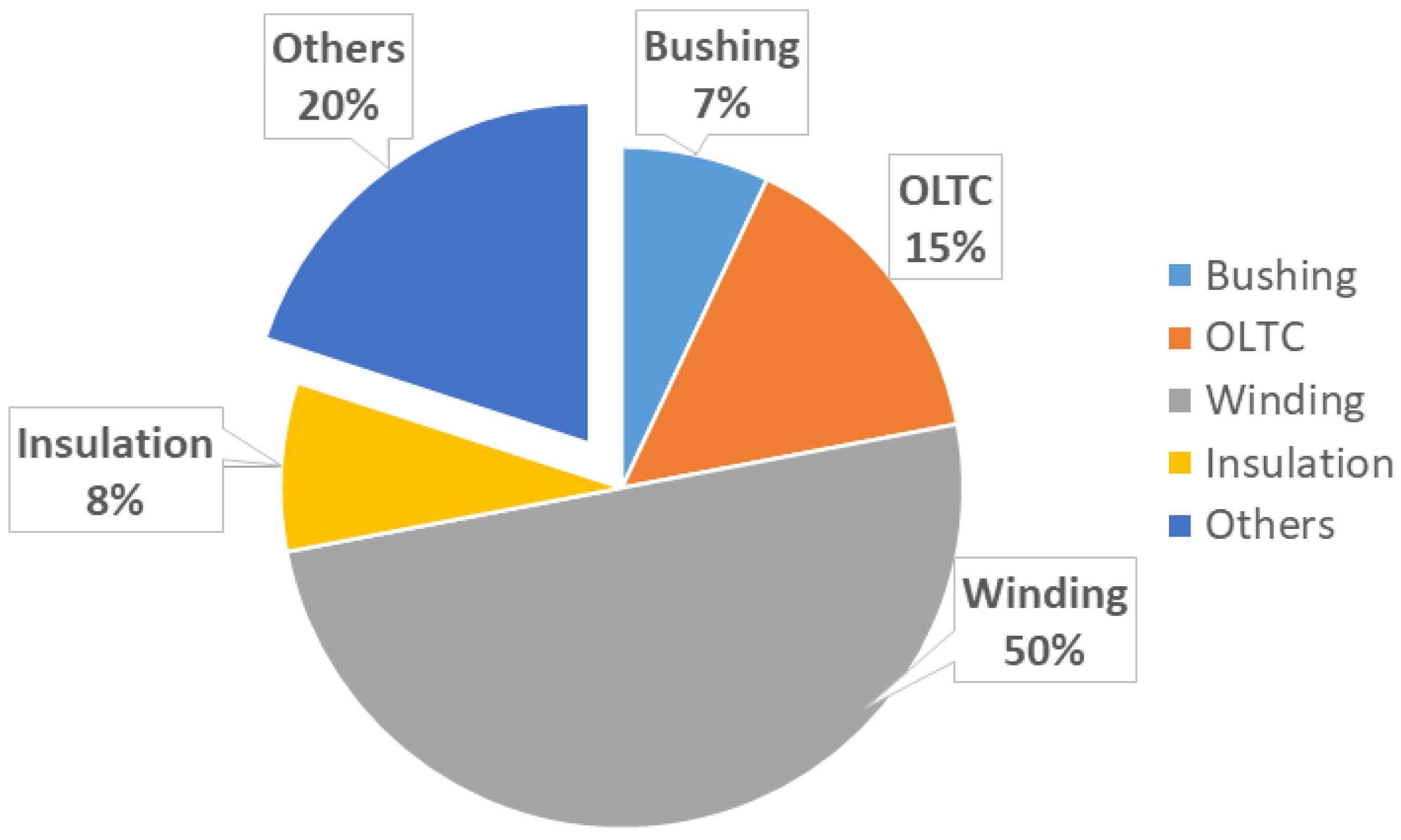
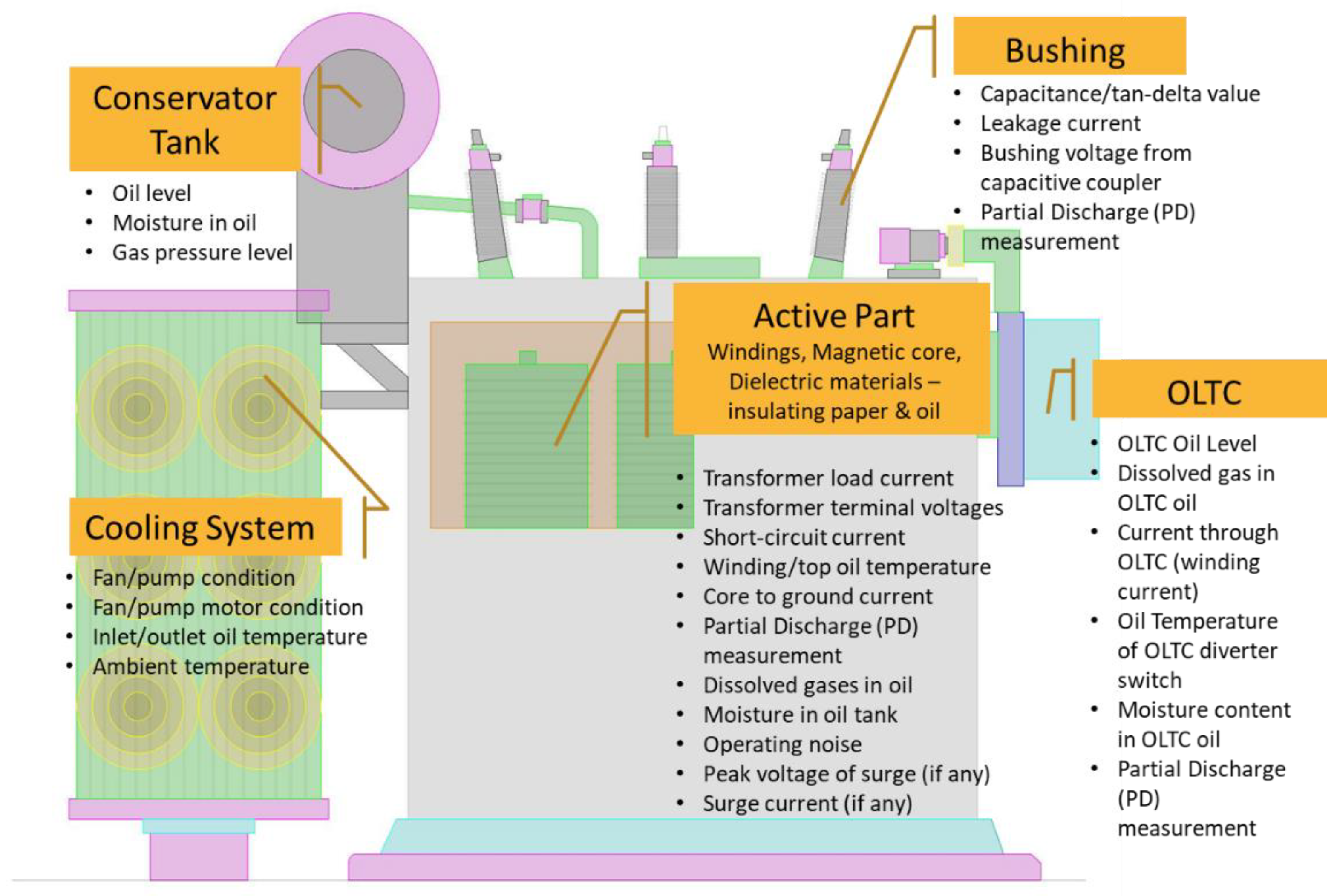
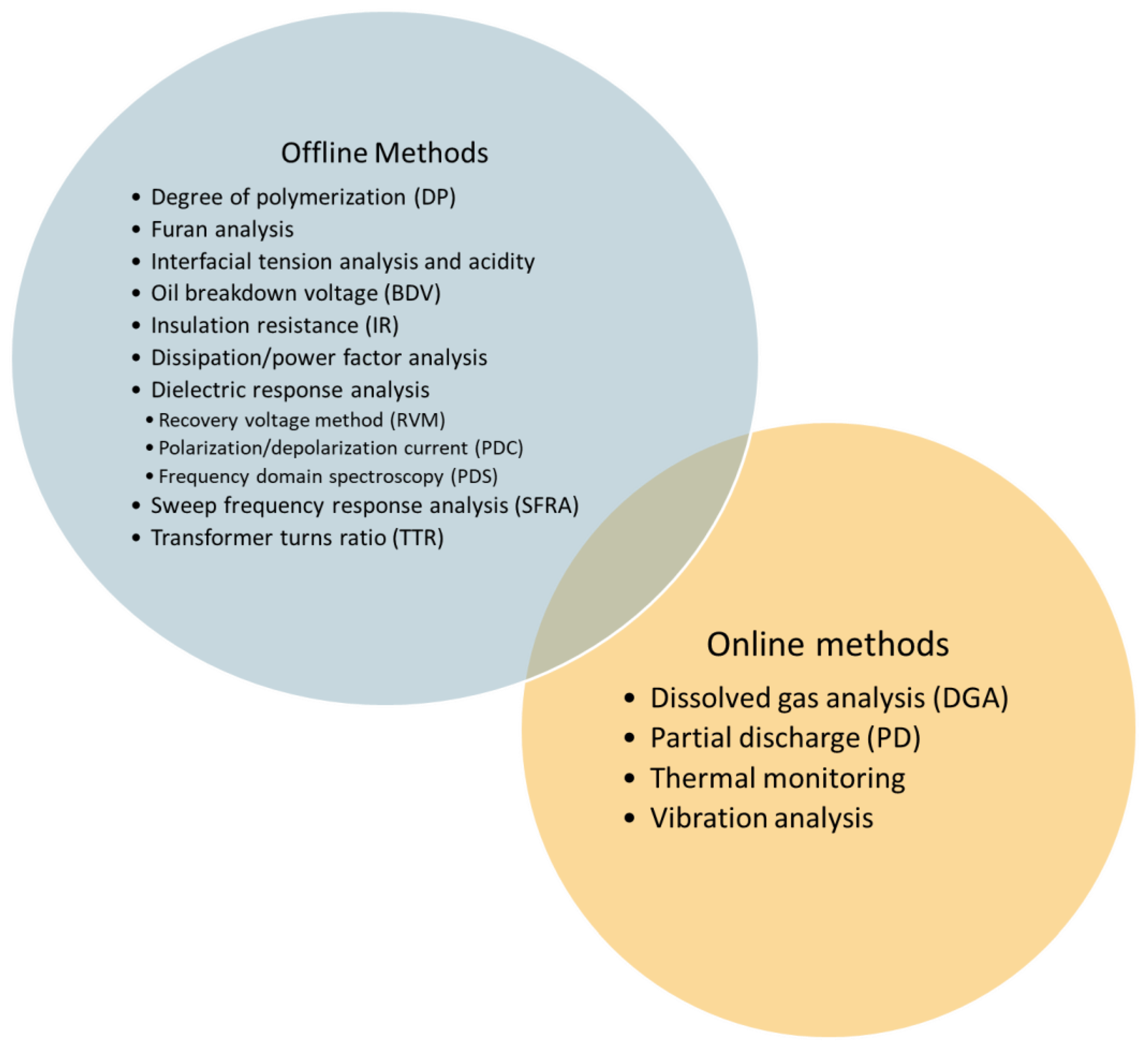

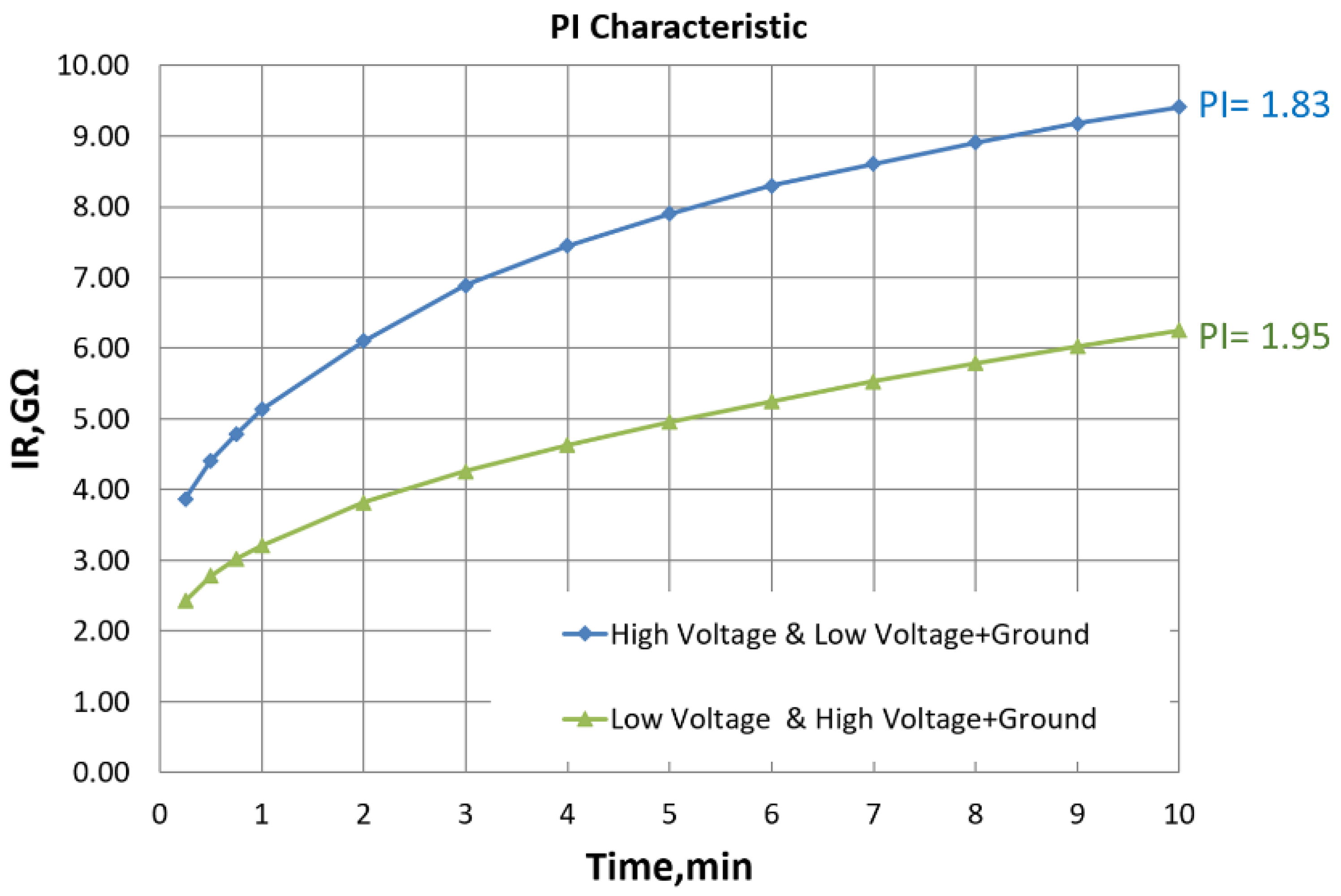
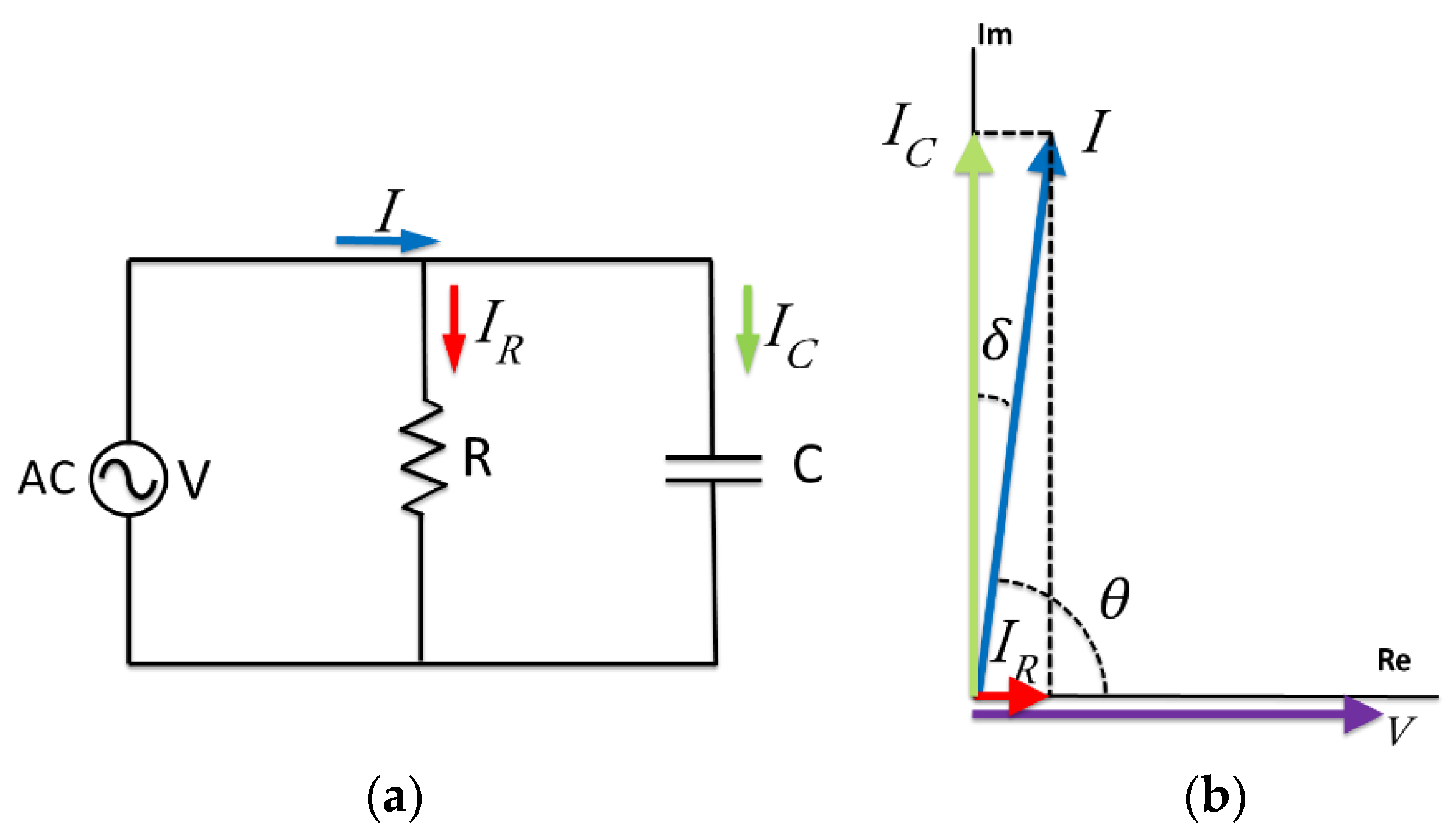
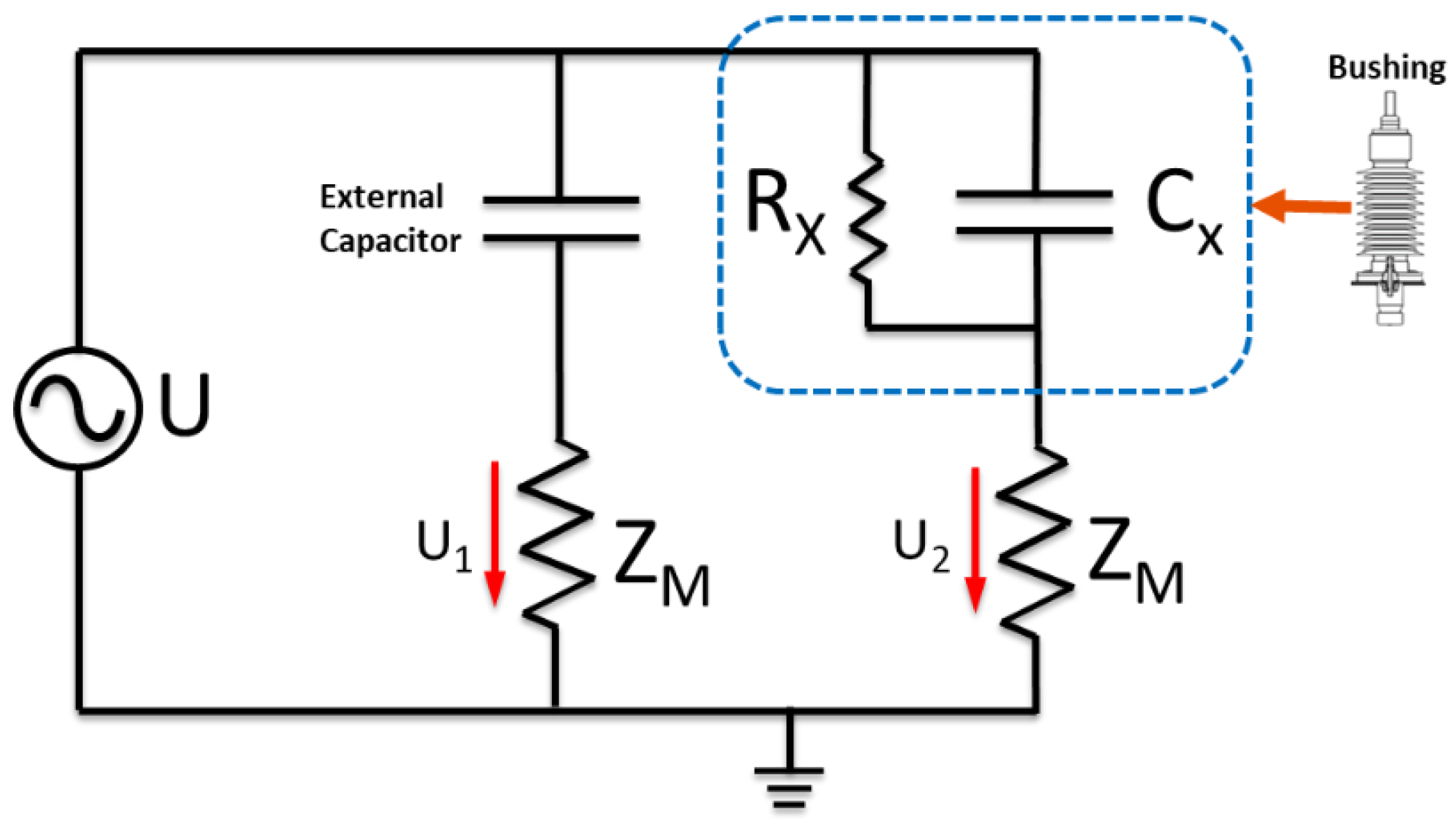
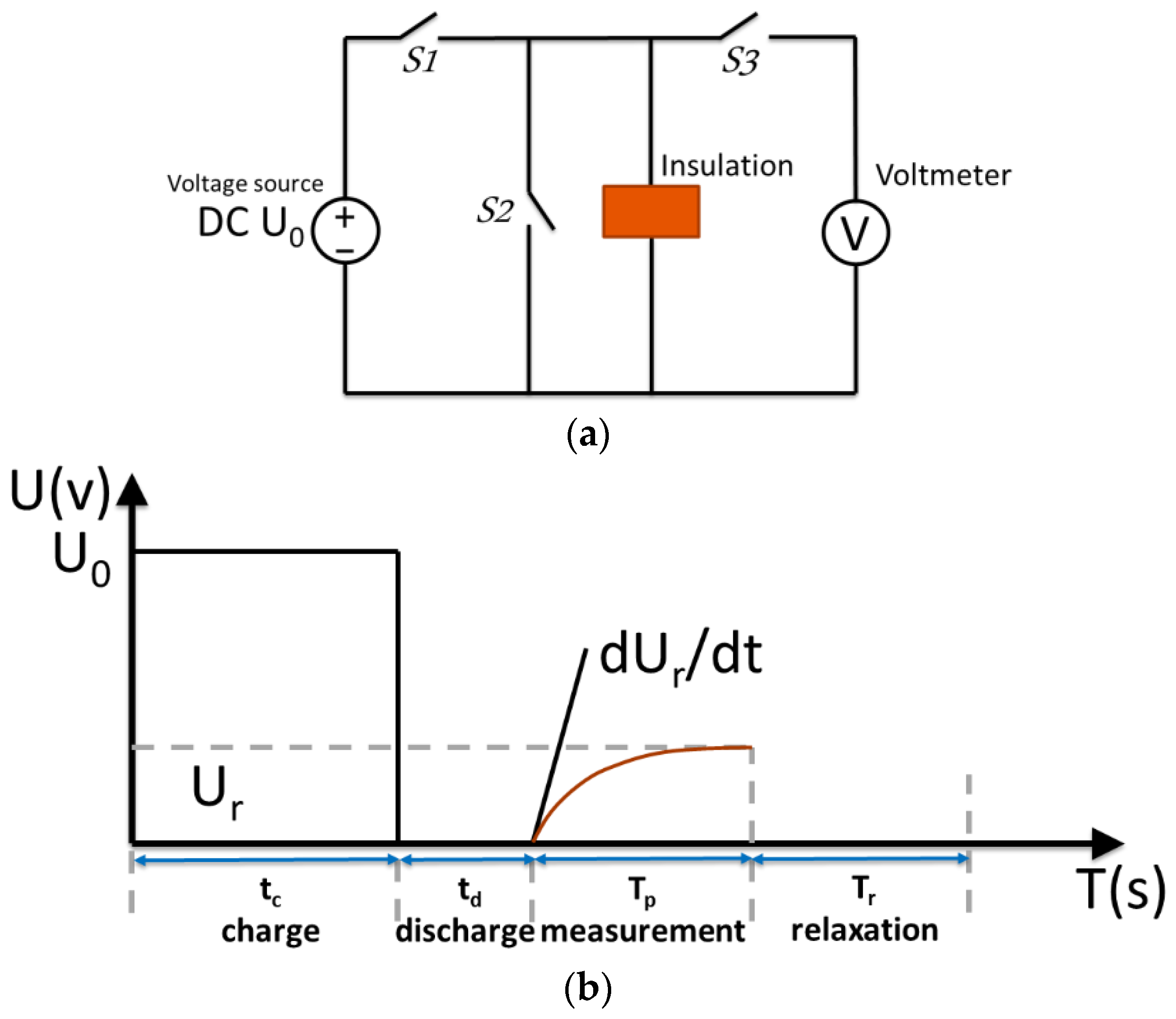
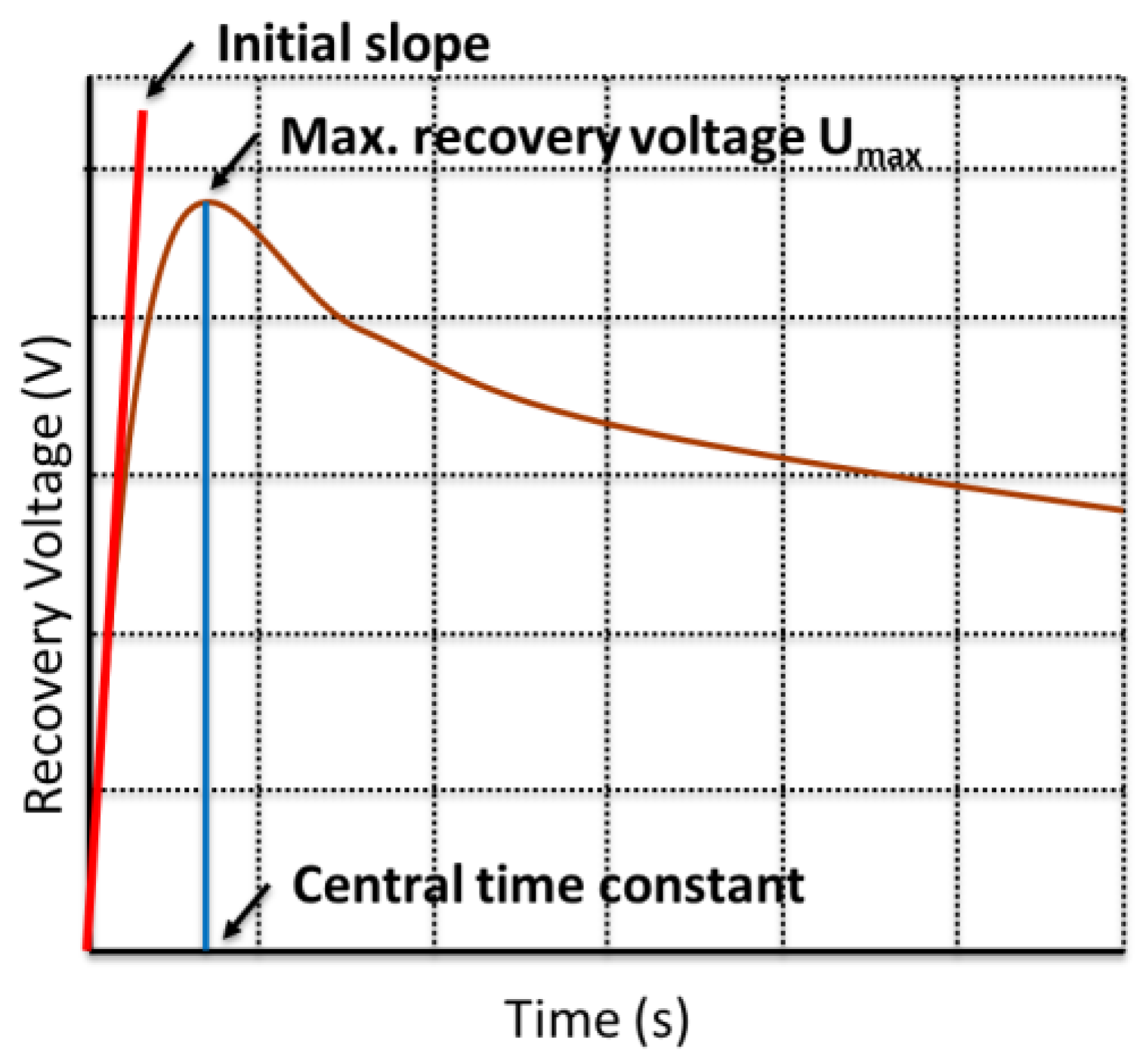

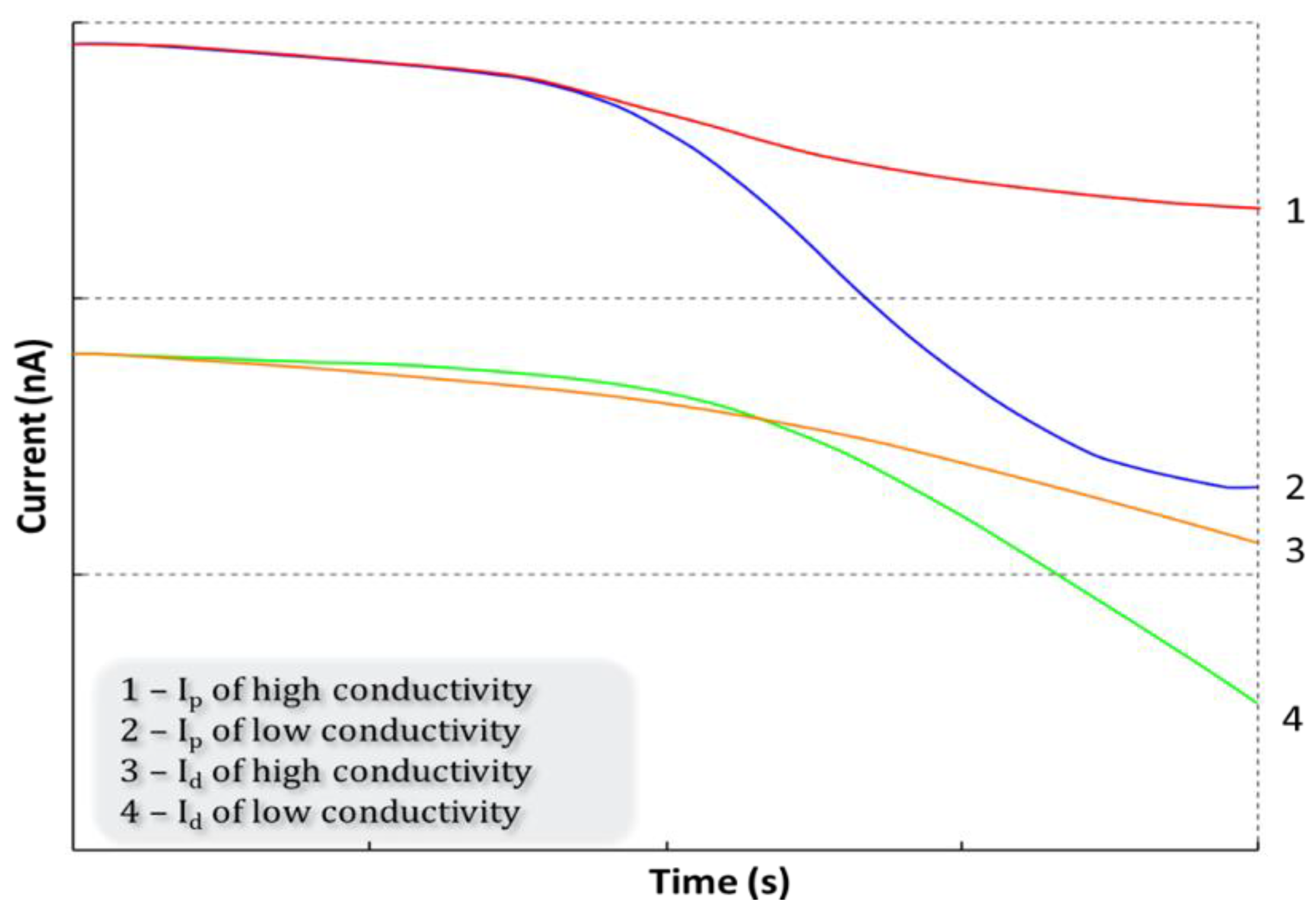
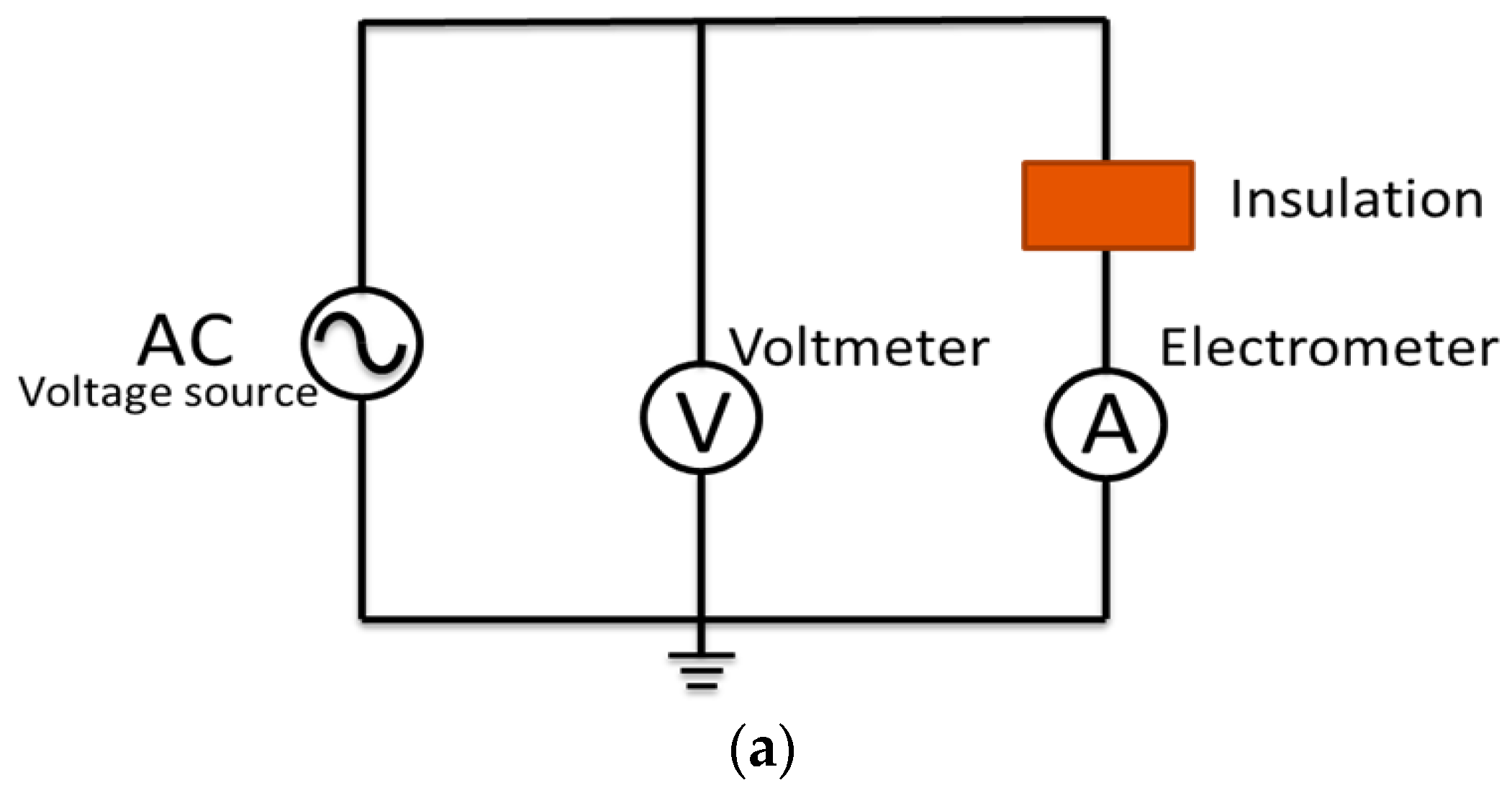
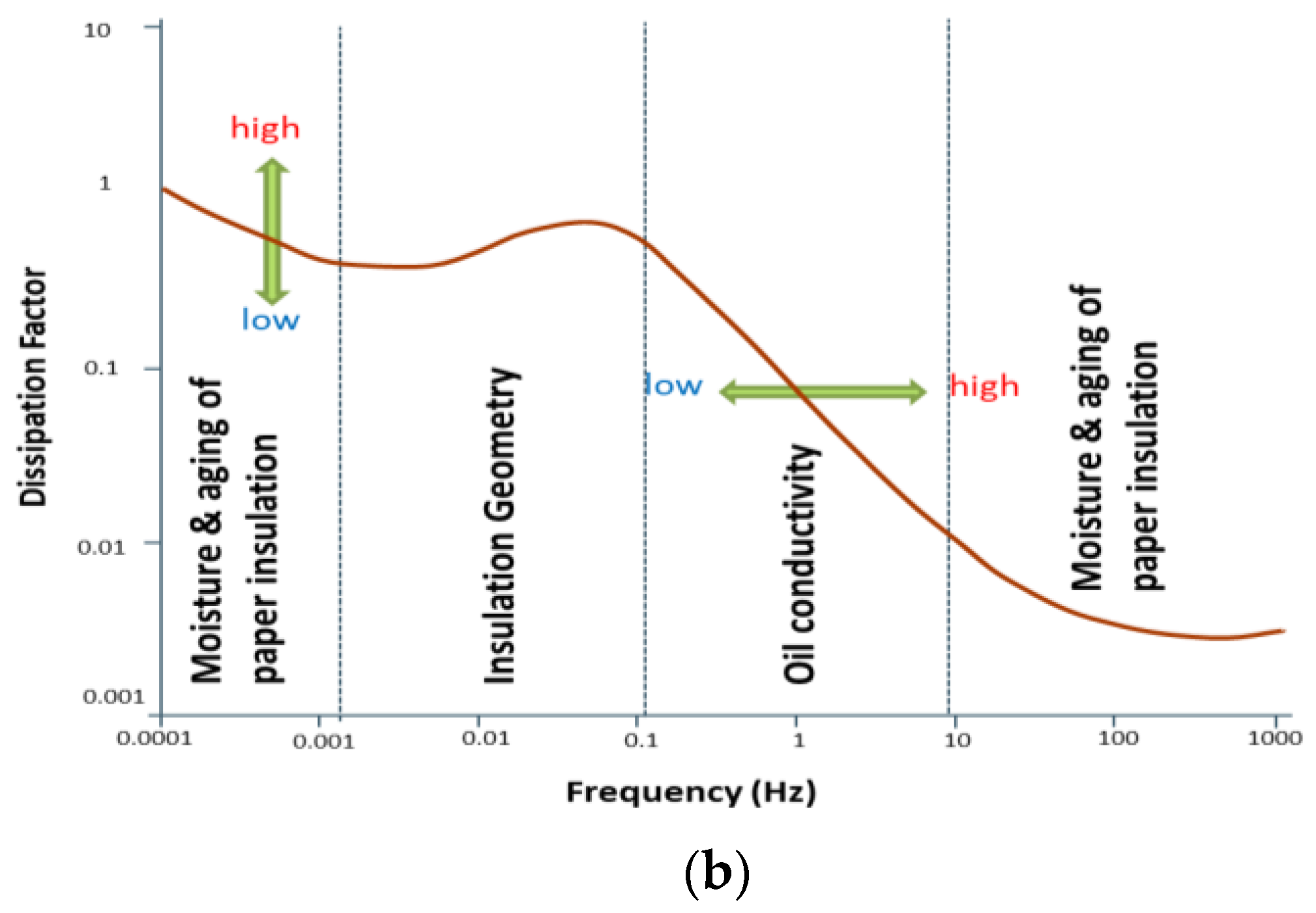
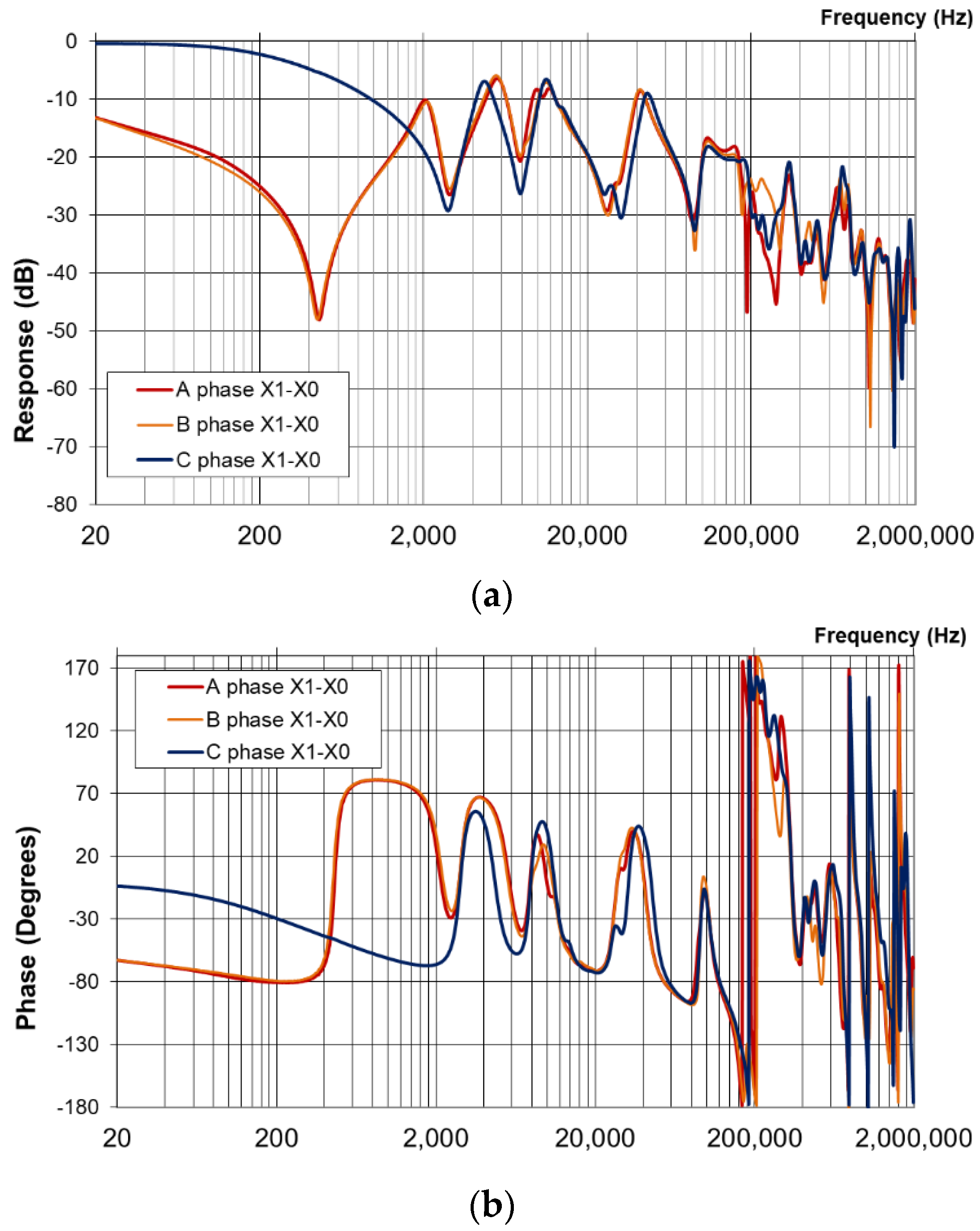
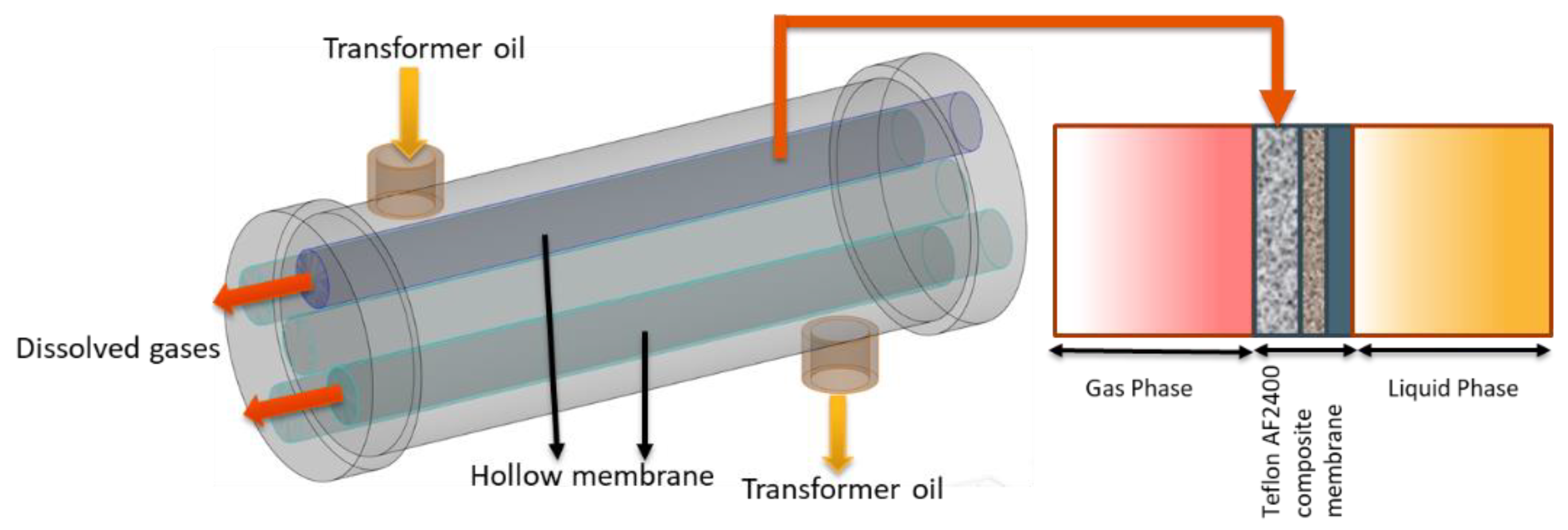
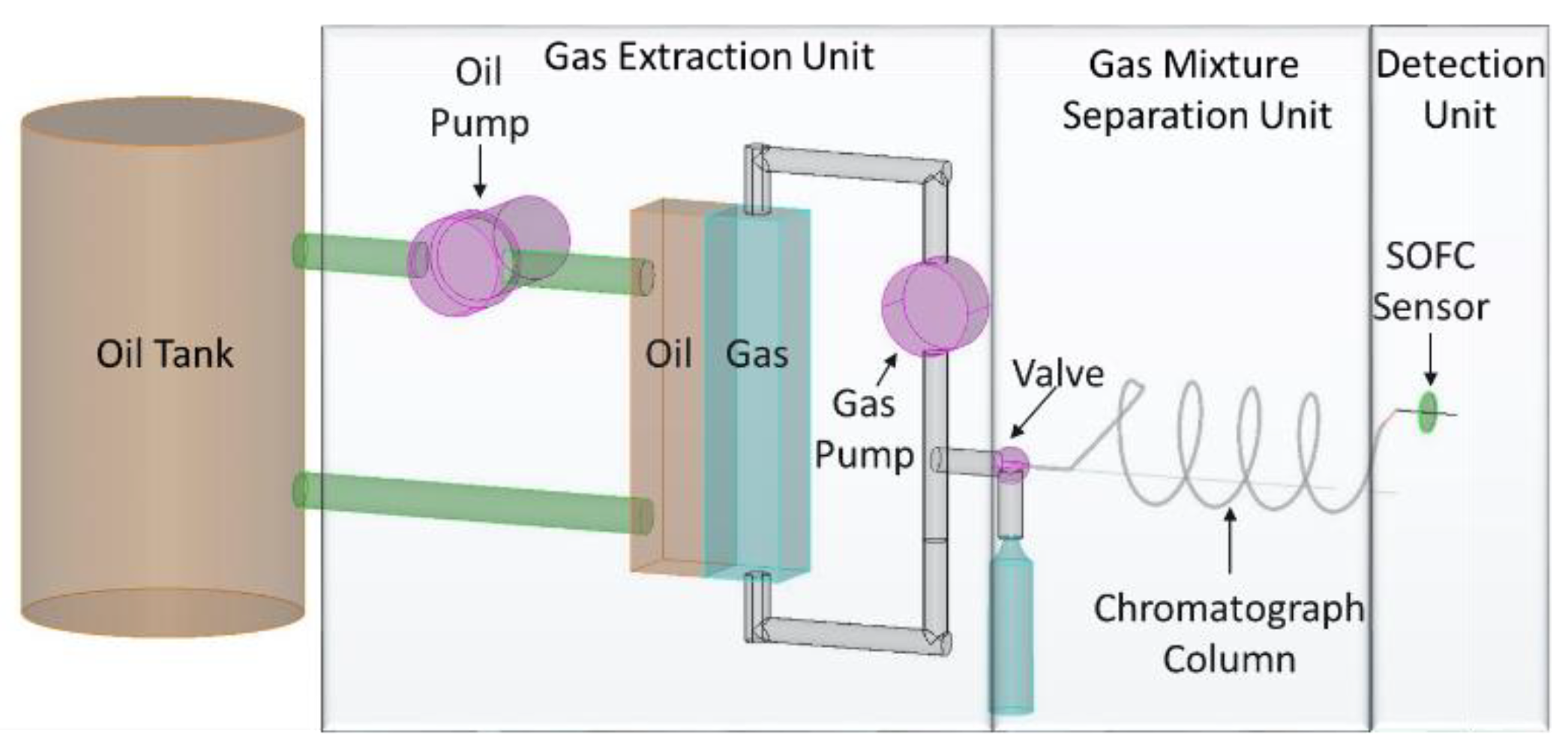




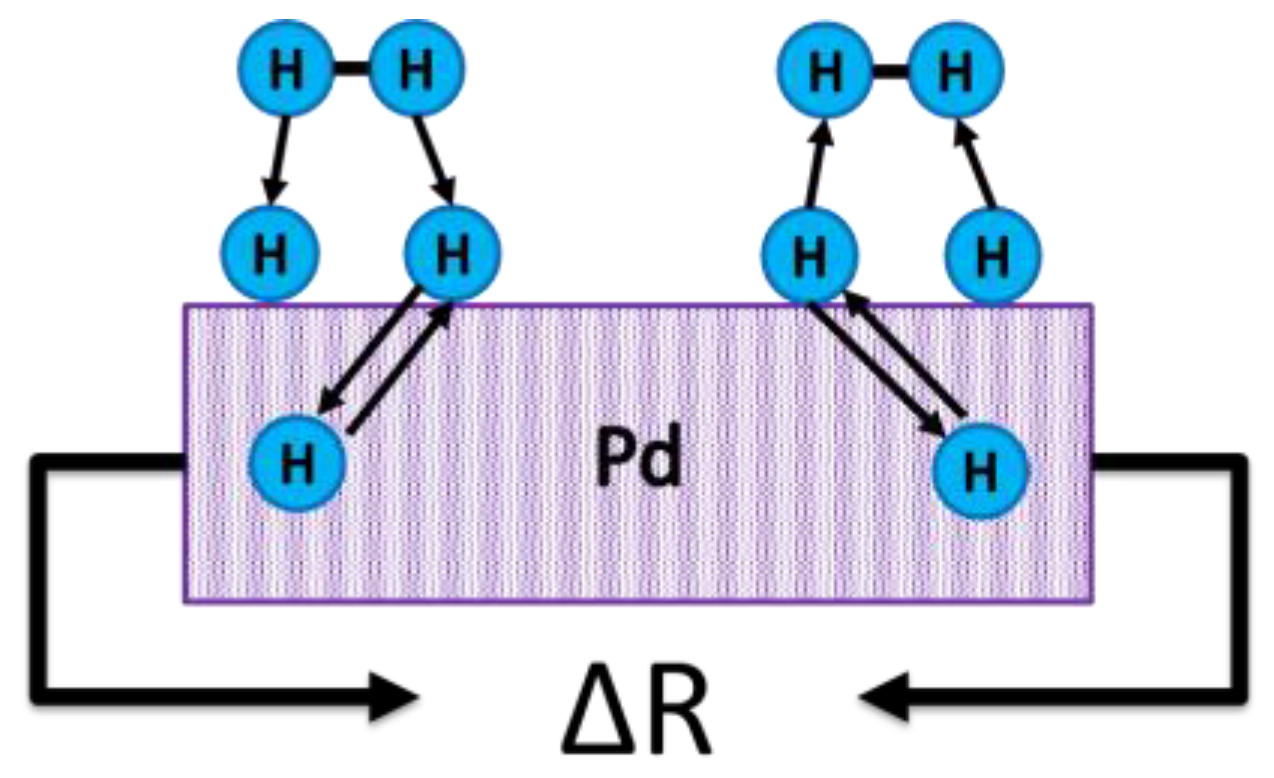



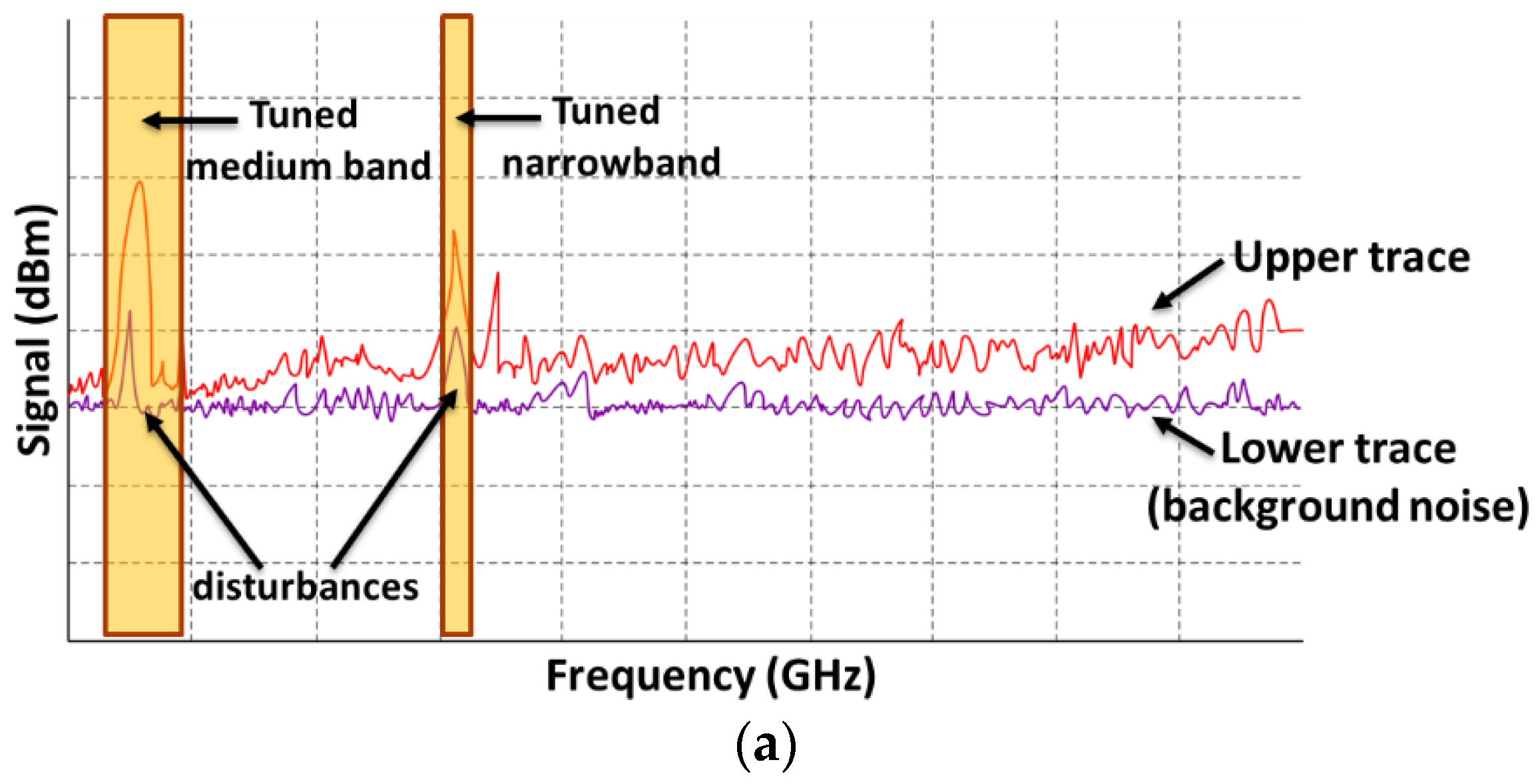
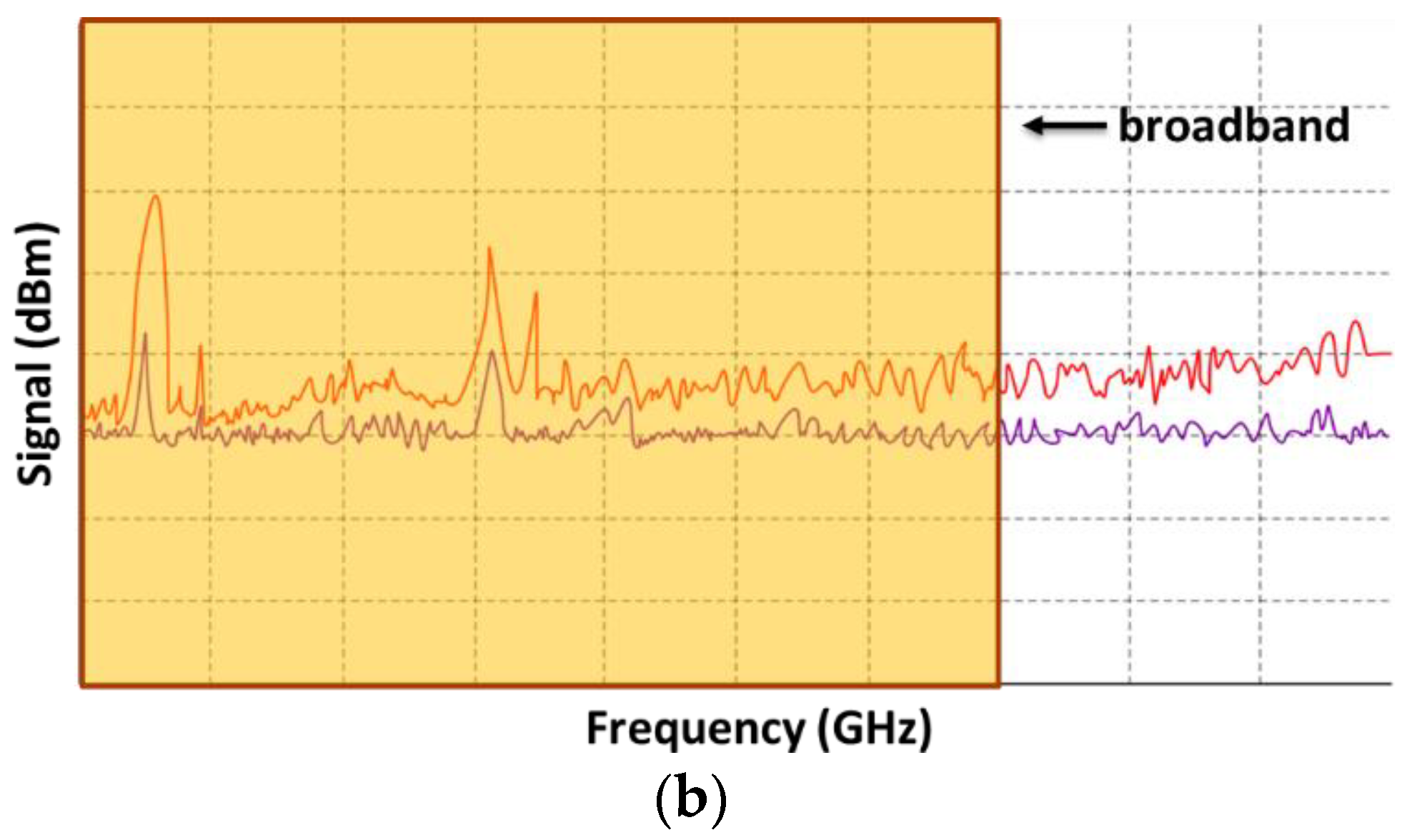
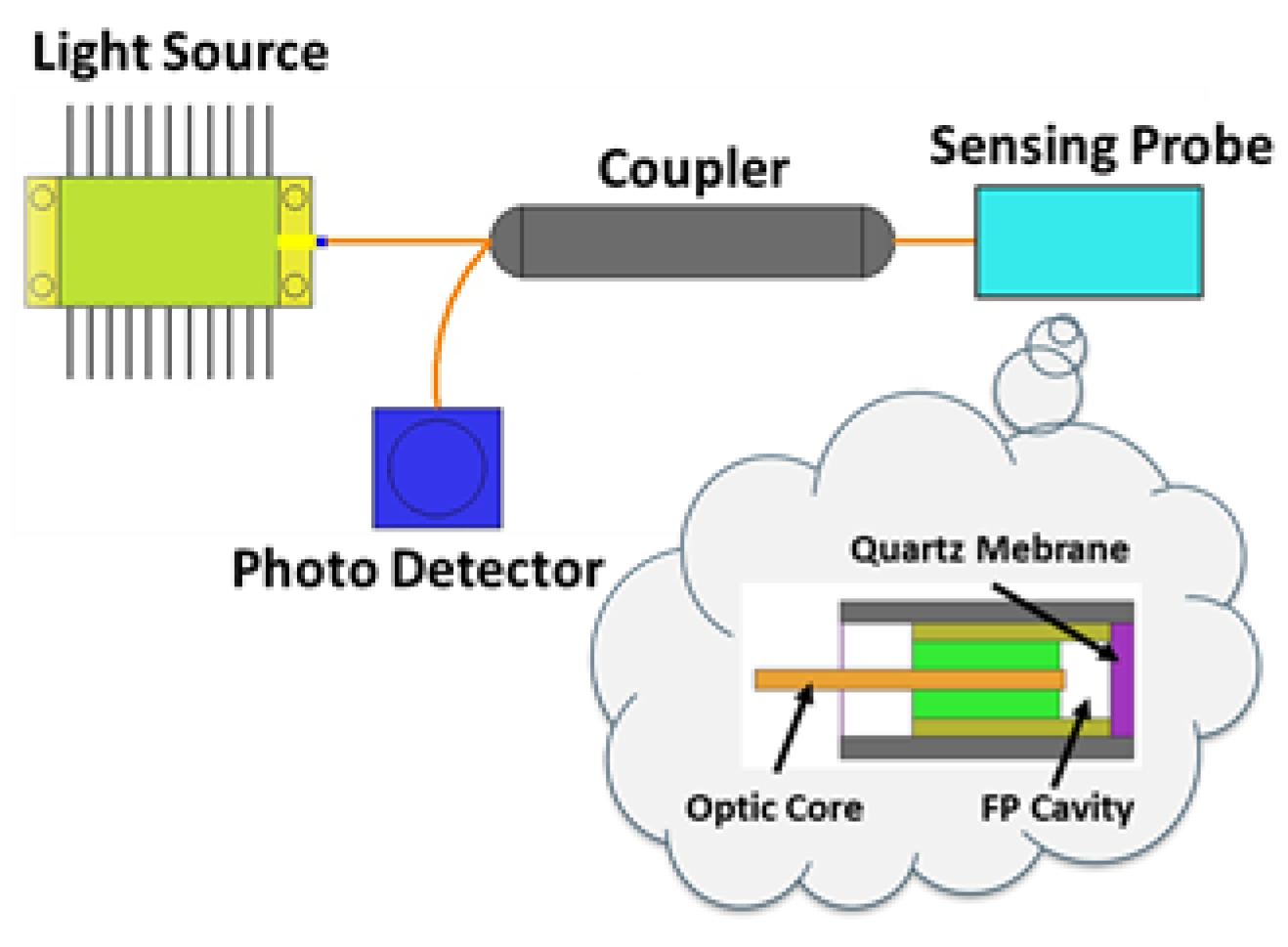






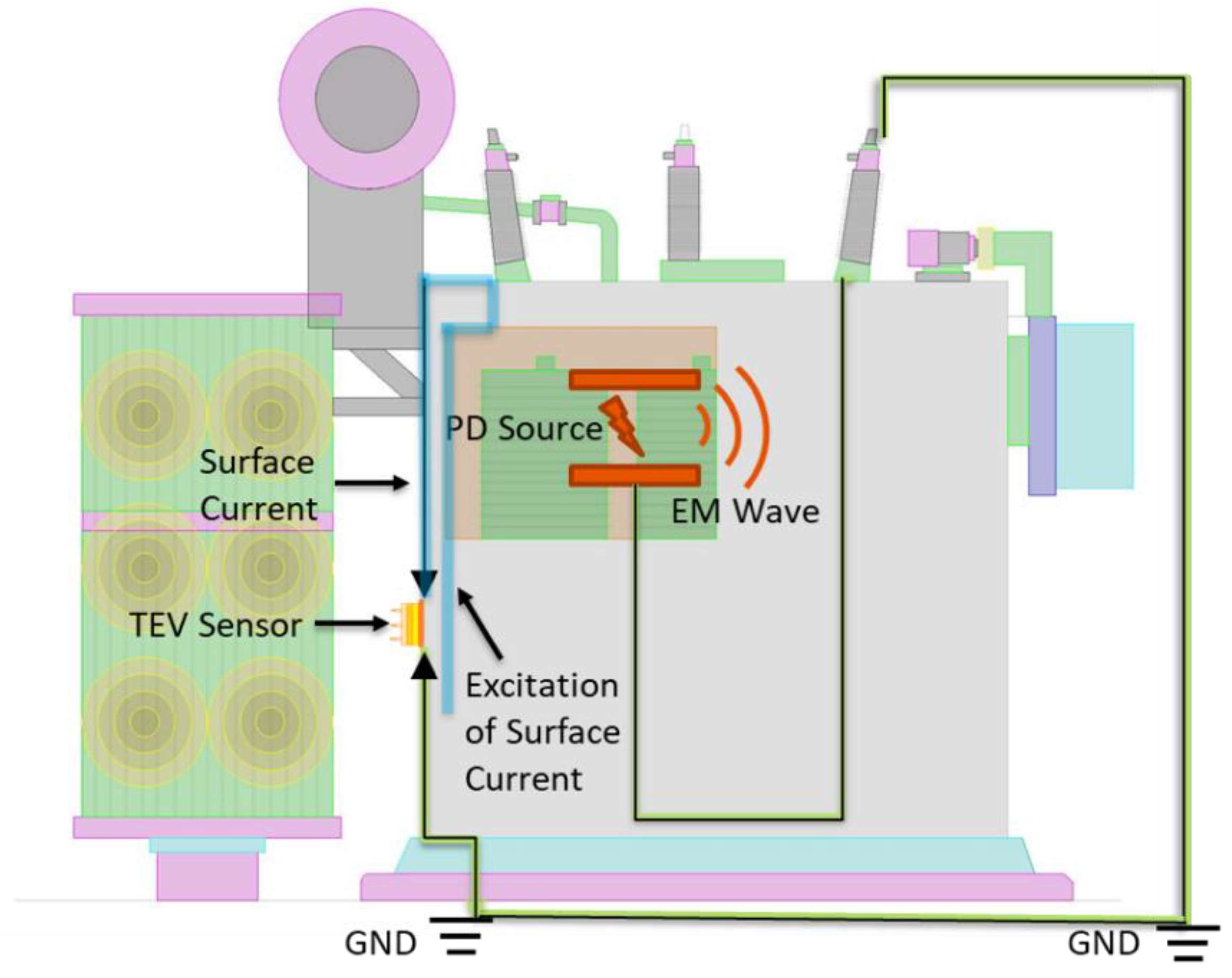

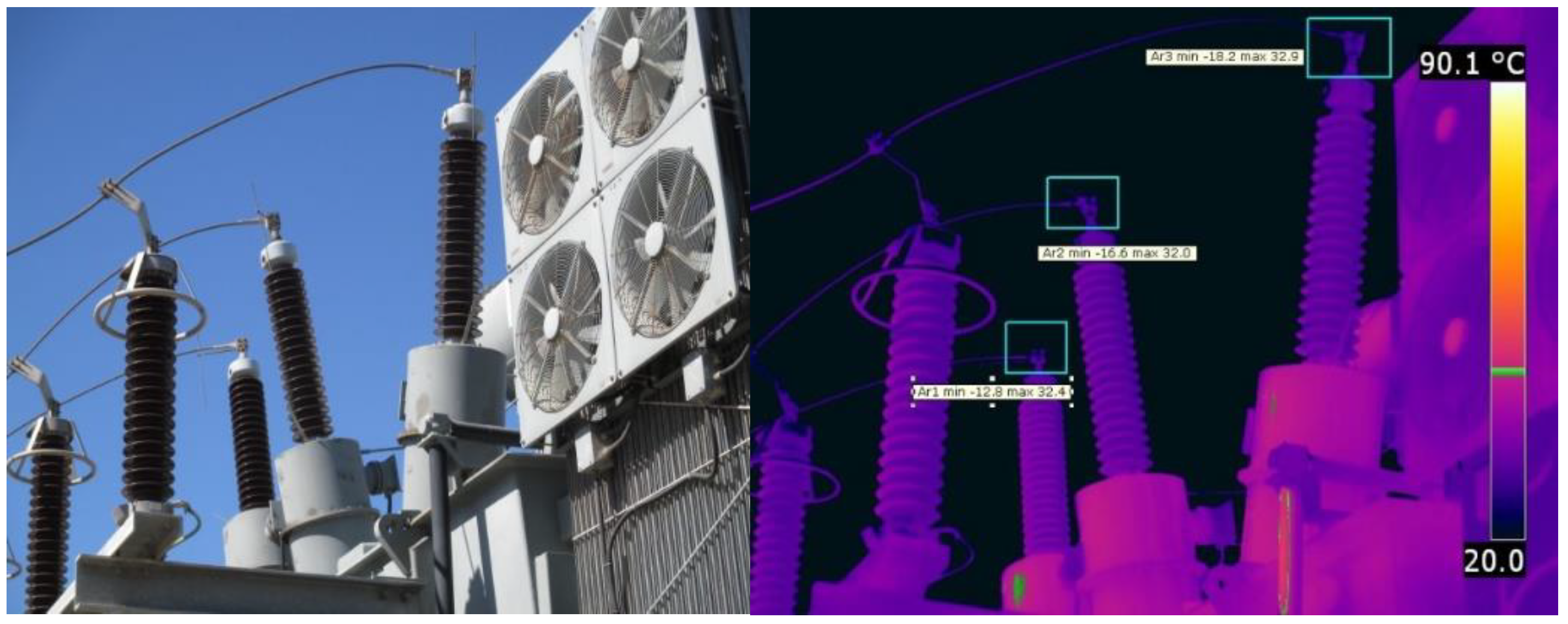
| Furan Compound | Symbol | Nature of Stress |
|---|---|---|
| 2-furaldehyde | 2-FAL | Overheating |
| 5-methyl-2-furaldehyde | 5-M2F | Local severe overheating |
| 5-hydroxymethyl-2-furaldehyde | 5-H2F | Oxidation |
| 2-acetyl furan | 2-ACF | Lightning |
| 2-furfurol | 2-FOL | High moisture |
| 2-FAL (ppm) | DP Value | Degree of Degradation |
|---|---|---|
| 0–0.1 | 1200–700 | Healthy |
| 0.1–1.0 | 700–450 | Moderate |
| 1–10 | 450–250 | Extensive |
| >10 | <250 | End of Life |
| Gas–Formula | Molecular | Temperature at Which Gas Forms | Source of Gases |
|---|---|---|---|
| Hydrogen–H2 |  | <150 °C—corona effect in oil | Partial discharge thermal faults |
| >250 °C—thermal and electrical faults | Power discharges | ||
| Methane–CH4 |  | <150–300 °C | Corona, partial discharge, low to/and medium temperature faults |
| Ethylene–C2H4 |  | 300–700 °C | High-temperature thermal faults |
| Ethane–C2H6 |  | 200–400 °C | Low to/and medium temperature faults |
| Acetylene–C2H2 |  | >700 °C | High hot spot. Low energy discharge |
| Carbon Monoxide–CO |  | 105–300 °C >300 °C complete decomposition | Thermal faults involving paper press board, wood and etc. |
| Carbon Dioxide–CO2 |  | 100–300 °C | Normal ageing, thermal fault involving cellulose |
| Nitrogen–N2 |  | Vacuum when temperature drops | Indicator of system leaks, over pressurization or changes in temperature |
| Oxygen–O2 |  | Vacuum when temperature drops | Exposure to air, leaky gasket, air breathing through conservator |
| Key Gas | Characteristic Fault |
|---|---|
| H2, CH4, C2H4, C2H6 | Thermal fault from 150 to 300 °C |
| H2, CH4, C2H4, C2H6 | Thermal fault from 300 to 700 °C |
| H2, C2H4, C2H2 | Over 700 °C thermal fault |
| CO, CO2 | Decomposition of cellulose |
| H2, CH4 | Partial discharge |
| H2, C2H2 | Arcing |
| Key Gas | Fault Type | Typical Proportions of Generated Combustible Gases |
|---|---|---|
| Ethylene (C2H4) | Thermal mineral oil | Predominantly ethylene with smaller proportions of ethane, methane, and hydrogen. Traces of acetylene at very high fault temperatures. |
| Carbon monoxide (CO) | Thermal mineral oil and cellulose | Predominantly carbon monoxide with much smaller quantities of hydrocarbon gases. Predominantly ethylene with smaller proportions of ethane, methane, and hydrogen. |
| Hydrogen (H2) | Electrical low-energy partial discharge (PD) | Predominantly hydrogen with small quantities of methane and traces of ethylene and ethane. |
| Hydrogen and acetylene (H2, C2H2) | Electrical high-energy (arcing) | Predominantly hydrogen and acetylene with minor traces of methane, ethylene, and ethane. Additionally, carbon monoxide if cellulose is involved. |
| Case | C2H2/C2H4 | CH4/H2 | C2H4/C2H6 | Suggested Fault Diagnosis |
|---|---|---|---|---|
| 0 | <0.1 | 0.1 to 1.0 | <0.1 | Unit normal |
| 1 | <0.1 | <0.1 | <0.1 | Low energy density acring-PD |
| 2 | 0.1 to 3.0 | 0.1 to 1.0 | >0.3 | Arcing—High erergy discharge |
| 3 | <0.1 | 0.1 to 1.0 | 1.0 to 3.0 | Low temperature thermal |
| 4 | <0.1 | >0.1 | 1.0 to 3.0 | Thermal < 700 °C |
| 5 | <0.1 | >0.1 | >0.3 | Thermal > 700 °C |
| Suggested Fault Diagnosis | Ratio 1 (R1) CH4/H2 Extracted from Mineral Oil|Gas Space | Ratio 2 (R2) C2H2/C2H4 Extracted from Mineral Oil|Gas Space | Ratio 3 (R3) C2H2/CH4 Extracted from Mineral Oil|Gas Space | Ratio 4 (R4) C2H6/C2H2 Extracted from Mineral Oil|Gas Space | ||||
|---|---|---|---|---|---|---|---|---|
| 1—Thermal decomposition | >1.0 | >0.1 | <0.75 | <1.0 | <0.3 | <0.1 | >0.4 | >0.2 |
| 2—Corona (low intensity PD) | <0.1 | <0.01 | Not significant | <0.3 | <0.1 | >0.4 | >0.2 | |
| 3—Arcing (high intensity PD) | >0.1, <1.0 | >0.01, <0.1 | >0.75 | >1.0 | >0.3 | >0.1 | <0.4 | <0.2 |
| Key Gas | Concentrations L1 (μL/L (ppm v/v)) |
|---|---|
| Hydrogen (H2) | 100 |
| Methane (CH4) | 120 |
| Carbon Monoxide (CO) | 350 |
| Acetylene (C2H2) | 1 |
| Ethylene (C2H4) | 50 |
| Ethane (C2H6) | 65 |
| Symbol | Fault |
|---|---|
| PD | Partial discharge |
| D1 | Discharge of low energy |
| D2 | Discharge of high energy |
| T1 | Thermal fualts of less than 300 °C |
| T2 | Thermal fault between 300 °C and 700 °C |
| T3 | Thermal faults greater than 700 °C |
| DT | Mixture of themal and electrical faults |
| Sensor Type | Comparison |
|---|---|
| Extrinsic Fabry-Perot Interferometer |
|
| Intrinsic Interferometer (Mach-Zehnder, Michelson and Sagnac Interferometric) |
|
| Fiber Bragg Gratings |
|
Publisher’s Note: MDPI stays neutral with regard to jurisdictional claims in published maps and institutional affiliations. |
© 2022 by the authors. Licensee MDPI, Basel, Switzerland. This article is an open access article distributed under the terms and conditions of the Creative Commons Attribution (CC BY) license (https://creativecommons.org/licenses/by/4.0/).
Share and Cite
Jin, L.; Kim, D.; Abu-Siada, A.; Kumar, S. Oil-Immersed Power Transformer Condition Monitoring Methodologies: A Review. Energies 2022, 15, 3379. https://doi.org/10.3390/en15093379
Jin L, Kim D, Abu-Siada A, Kumar S. Oil-Immersed Power Transformer Condition Monitoring Methodologies: A Review. Energies. 2022; 15(9):3379. https://doi.org/10.3390/en15093379
Chicago/Turabian StyleJin, Lan, Dowon Kim, Ahmed Abu-Siada, and Shantanu Kumar. 2022. "Oil-Immersed Power Transformer Condition Monitoring Methodologies: A Review" Energies 15, no. 9: 3379. https://doi.org/10.3390/en15093379
APA StyleJin, L., Kim, D., Abu-Siada, A., & Kumar, S. (2022). Oil-Immersed Power Transformer Condition Monitoring Methodologies: A Review. Energies, 15(9), 3379. https://doi.org/10.3390/en15093379







